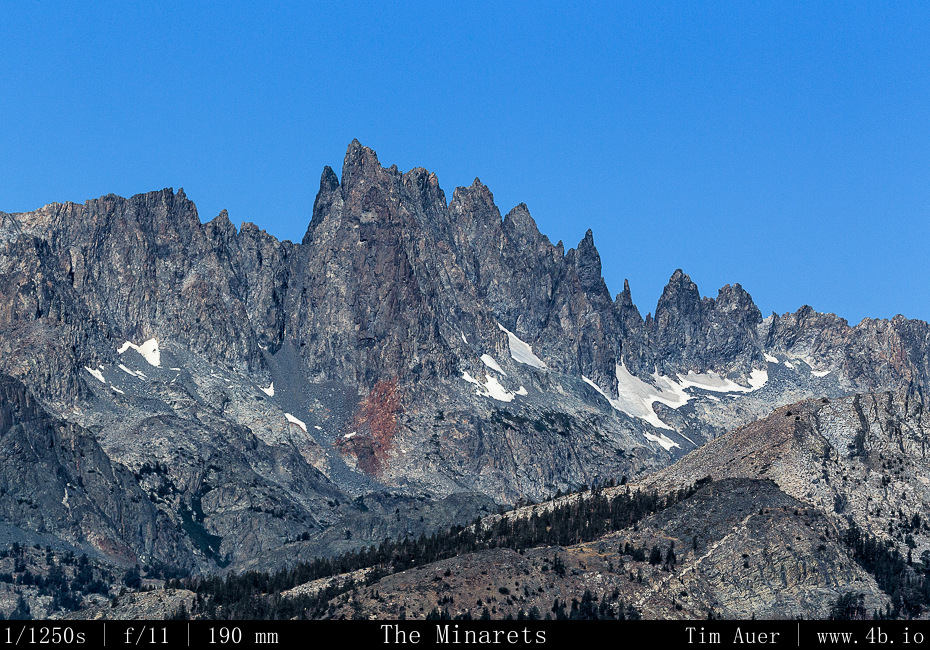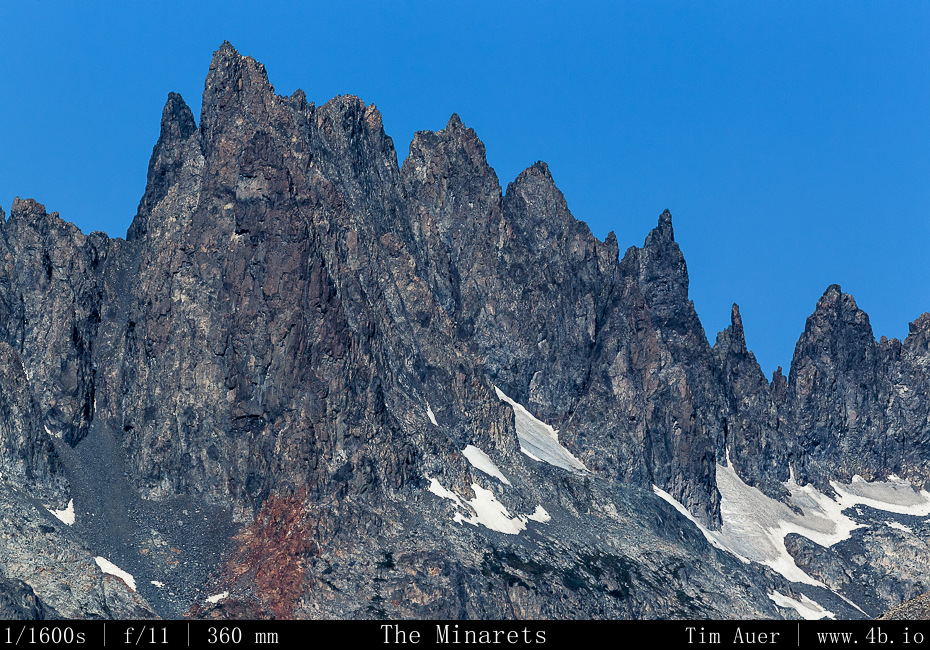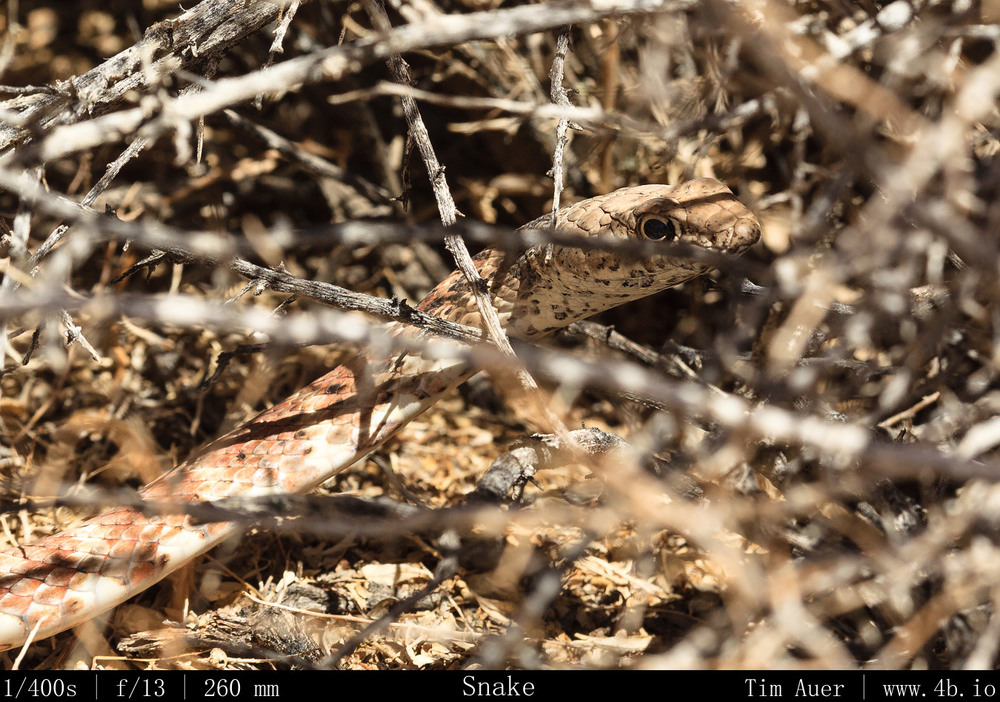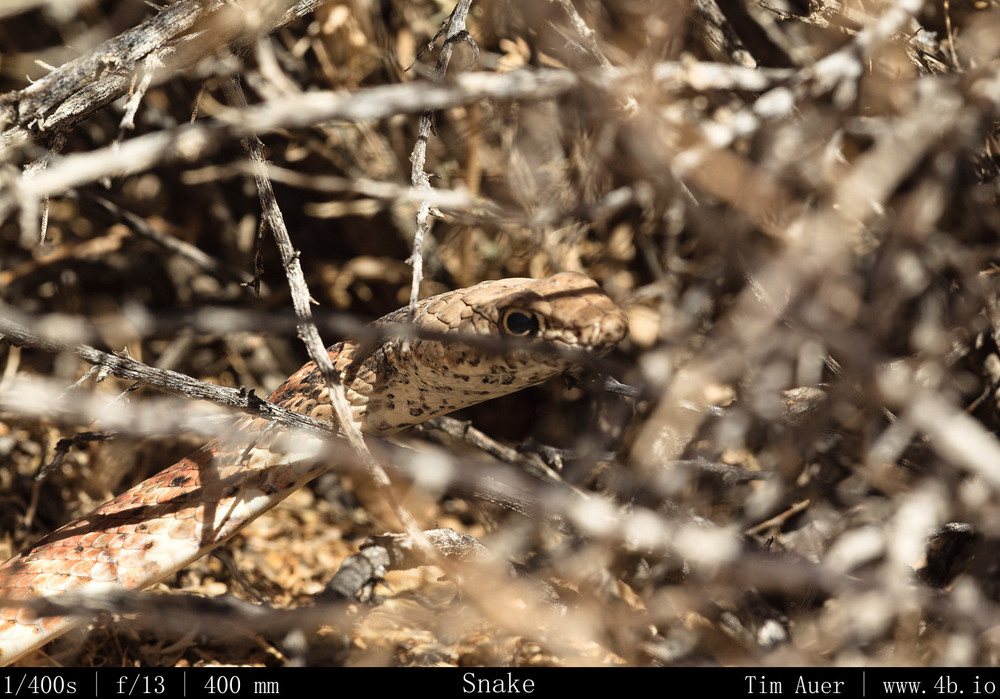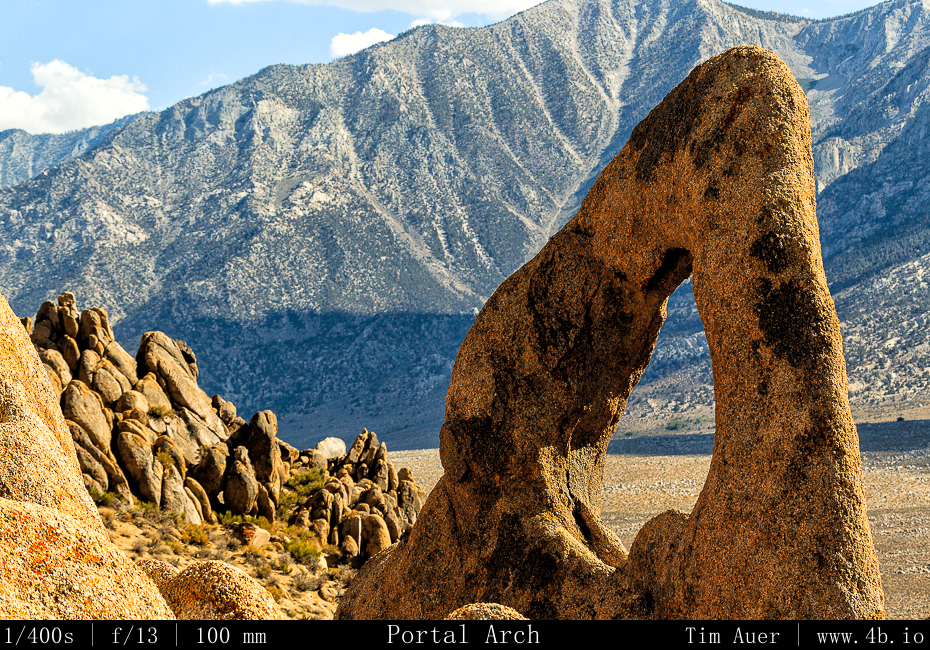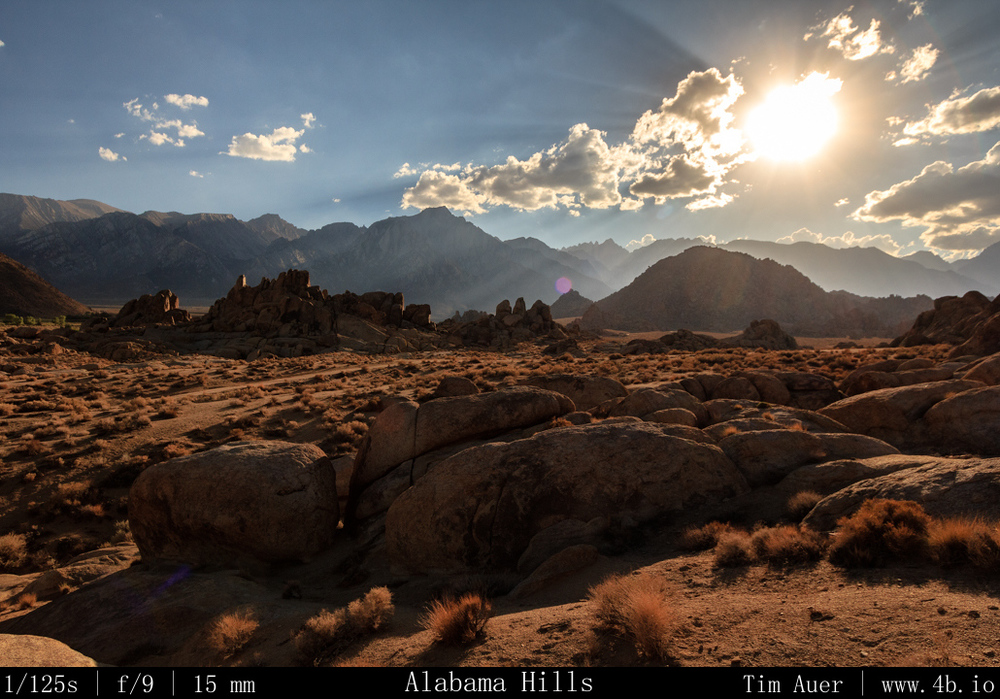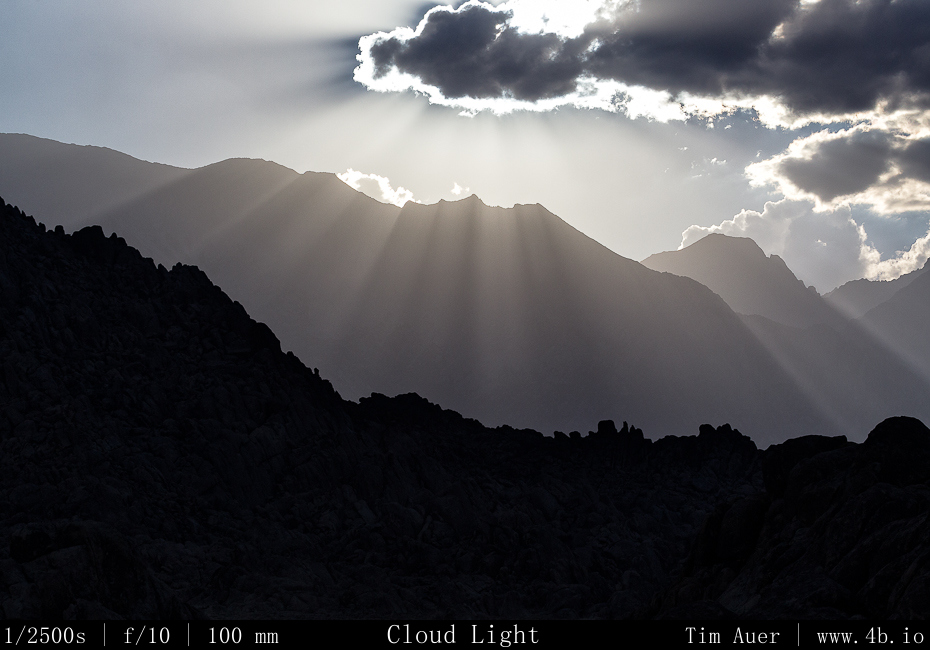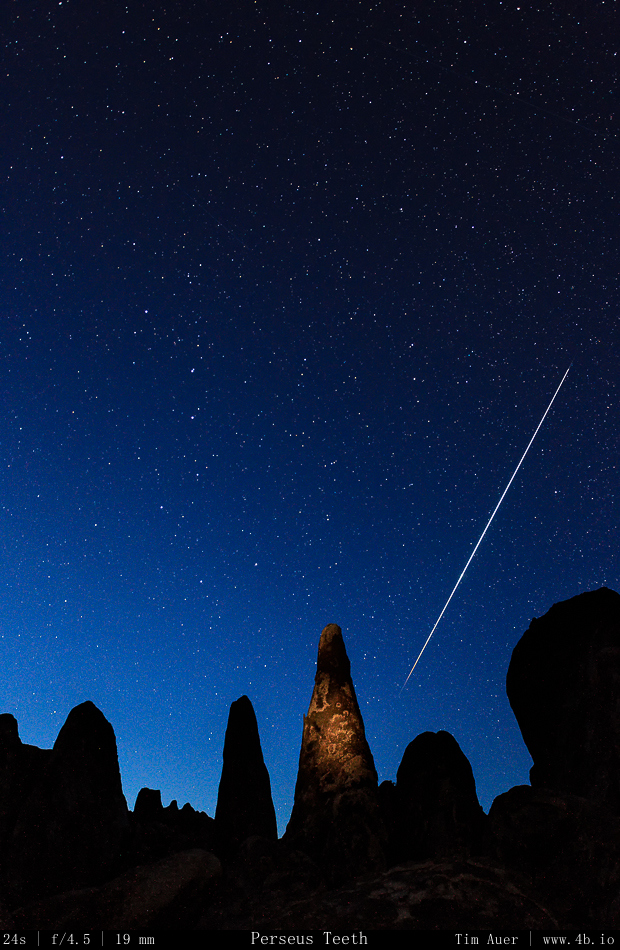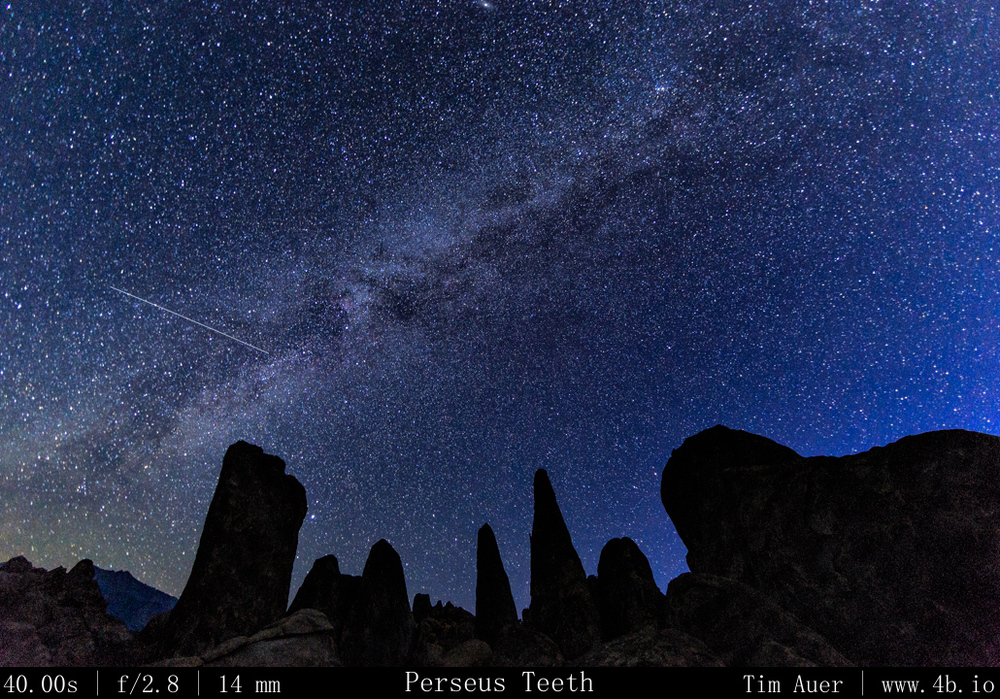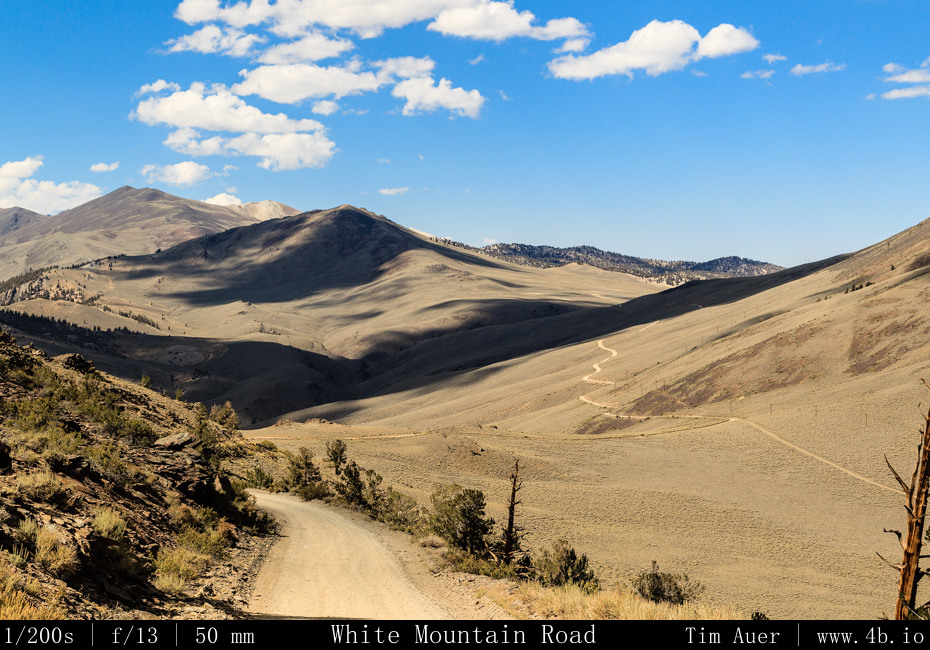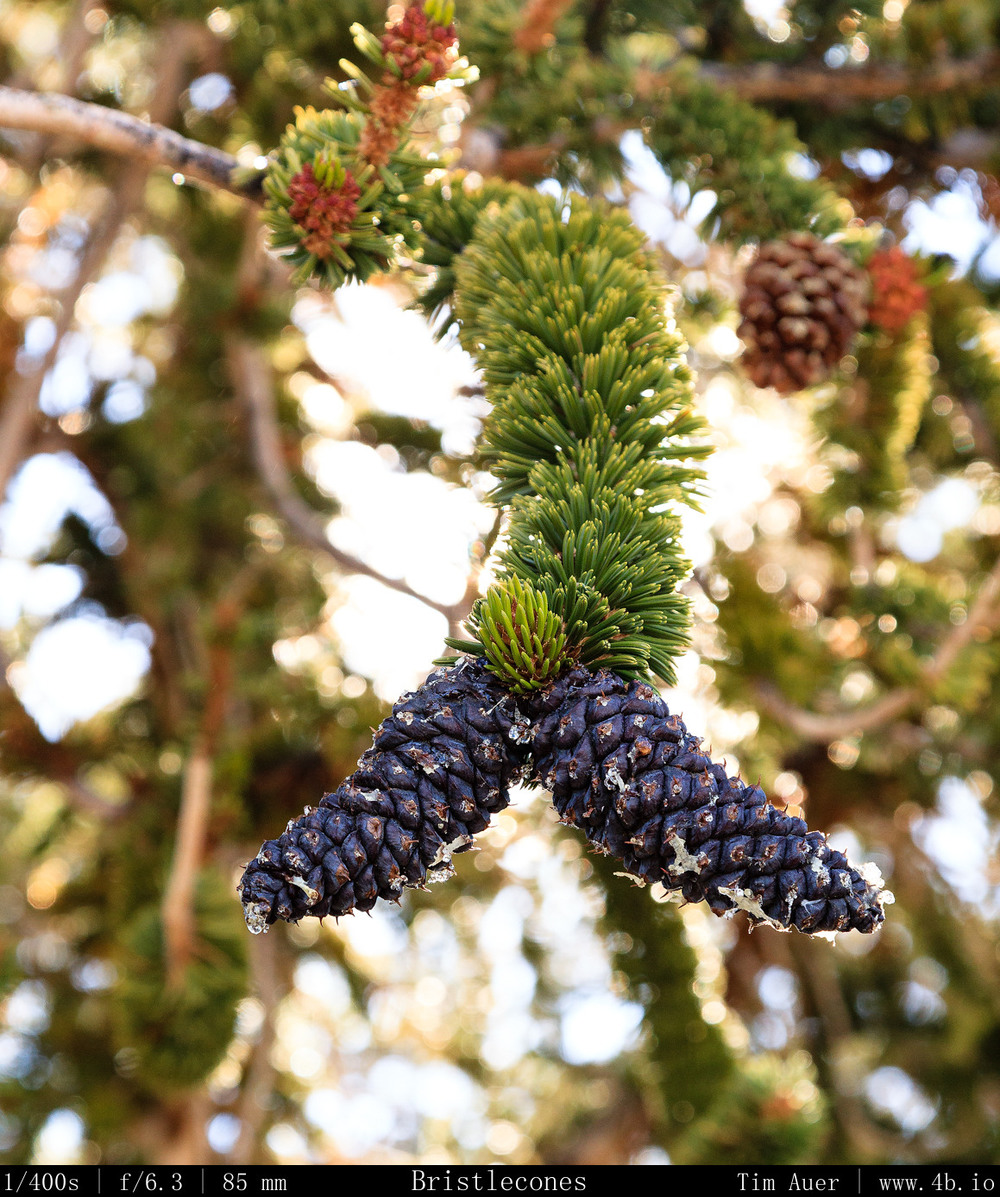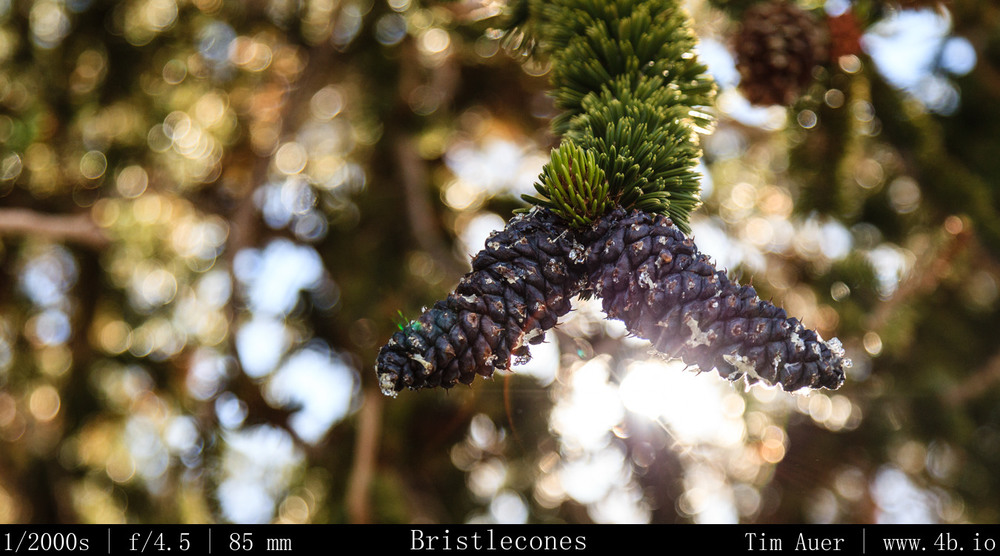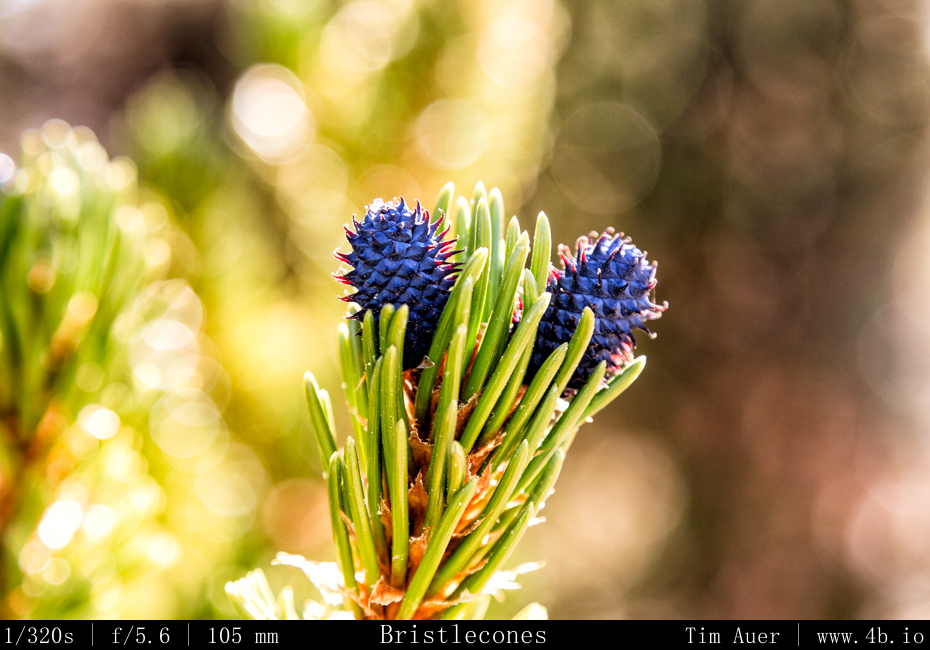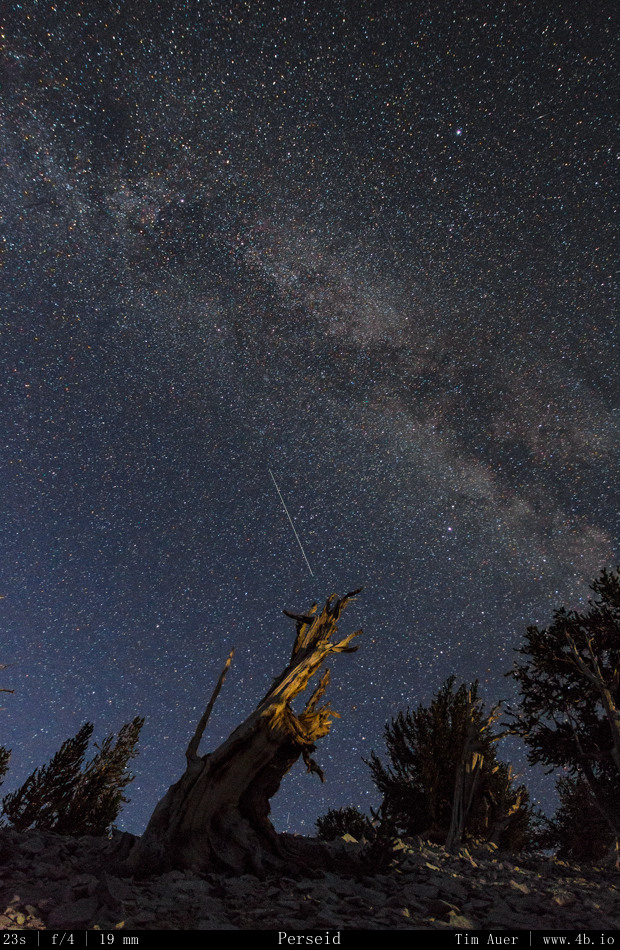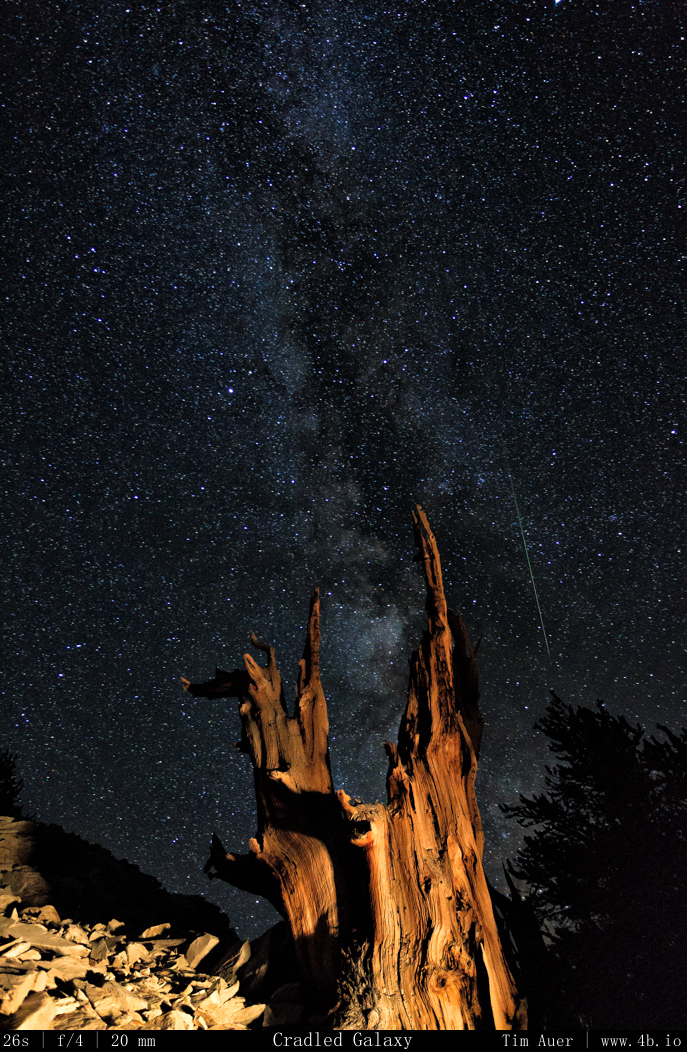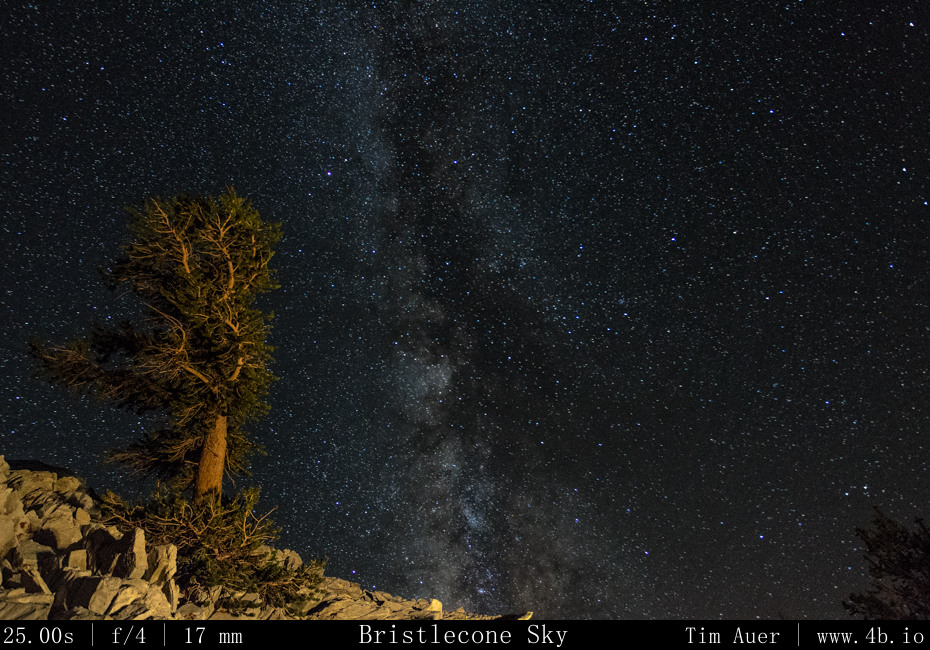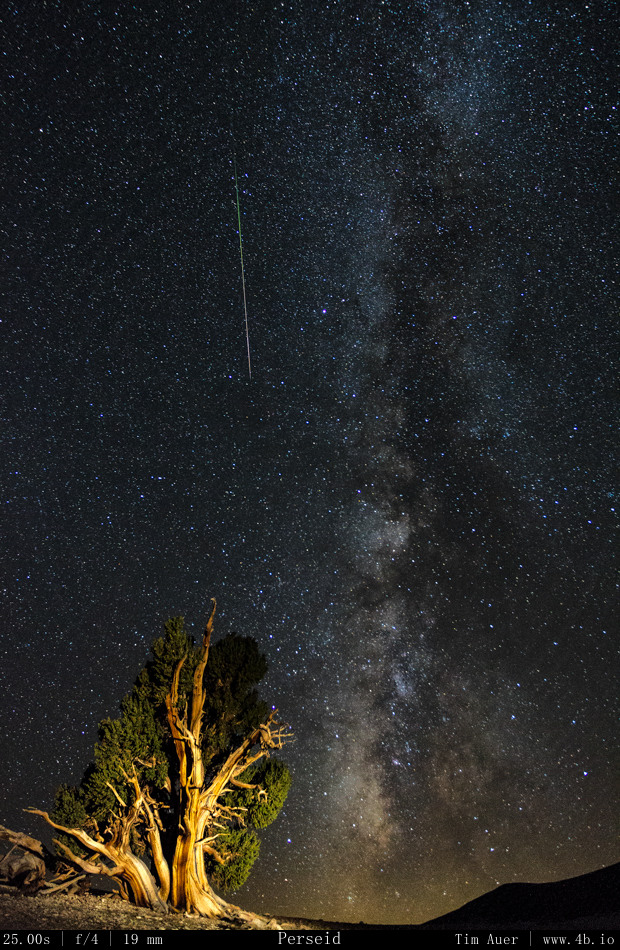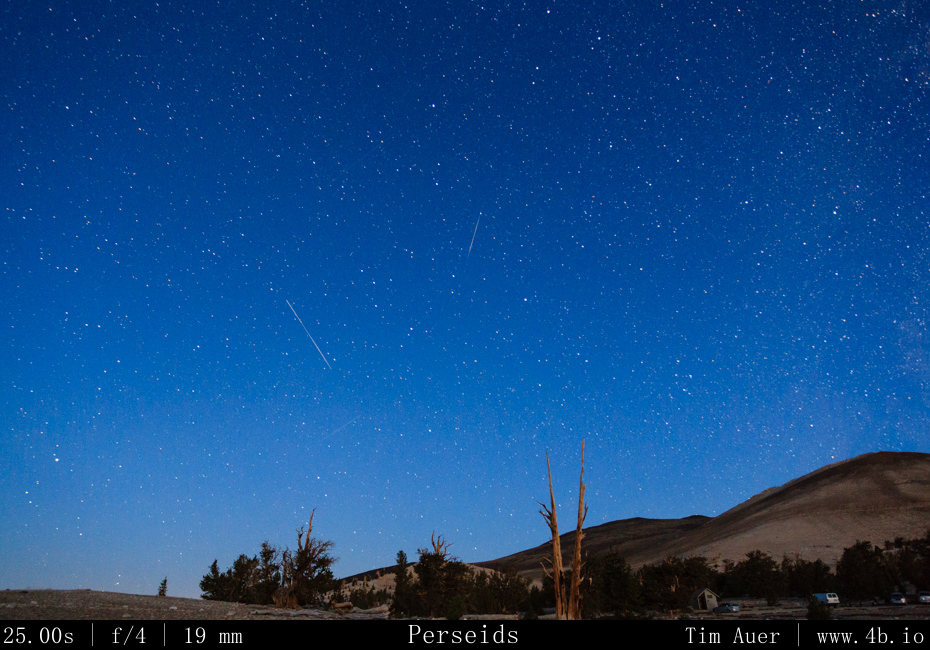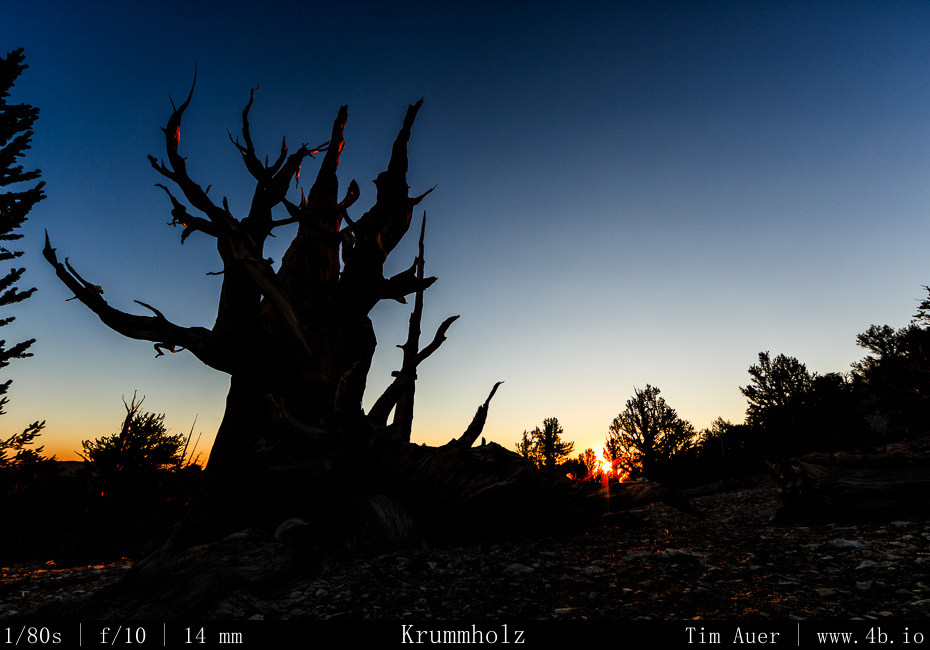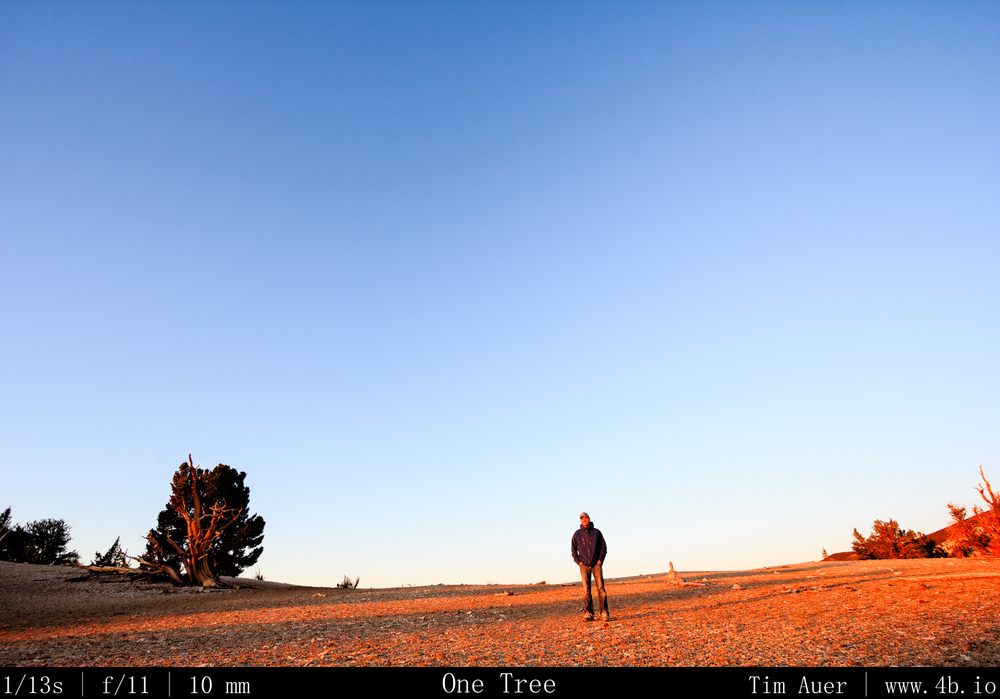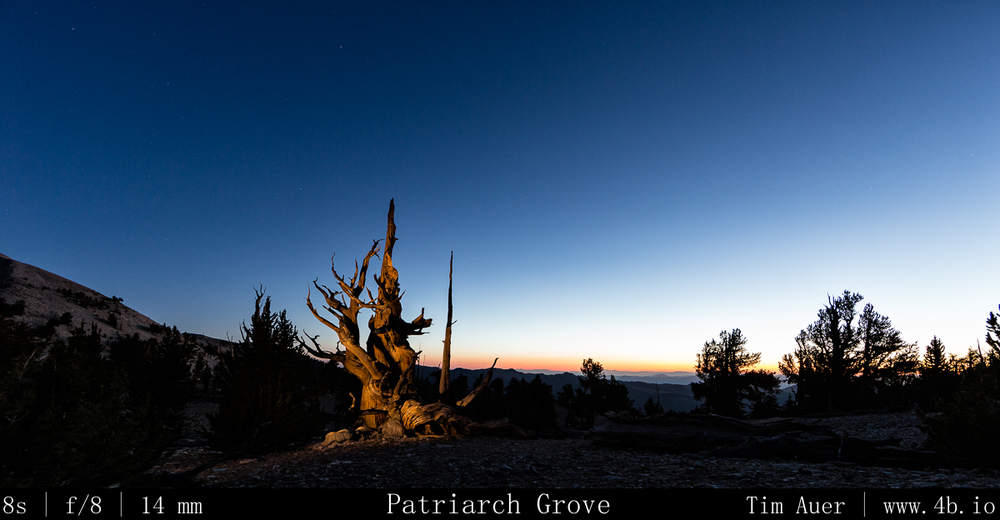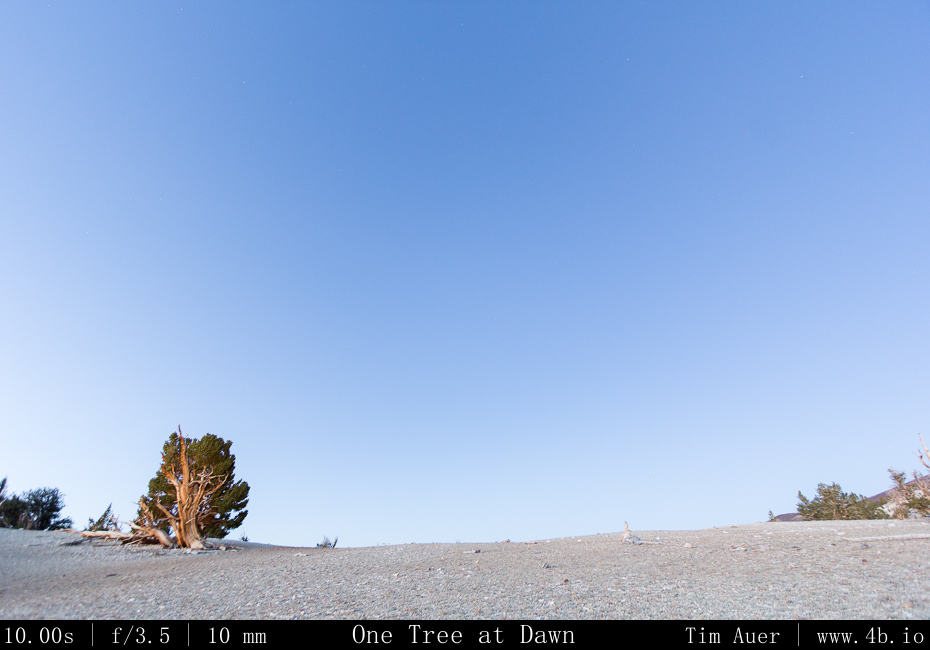Quick break from the Churchill processing to upload some photos from the group camping trip to Yosemite! Photos featured here are taken from Taft Point and Glacier Point.
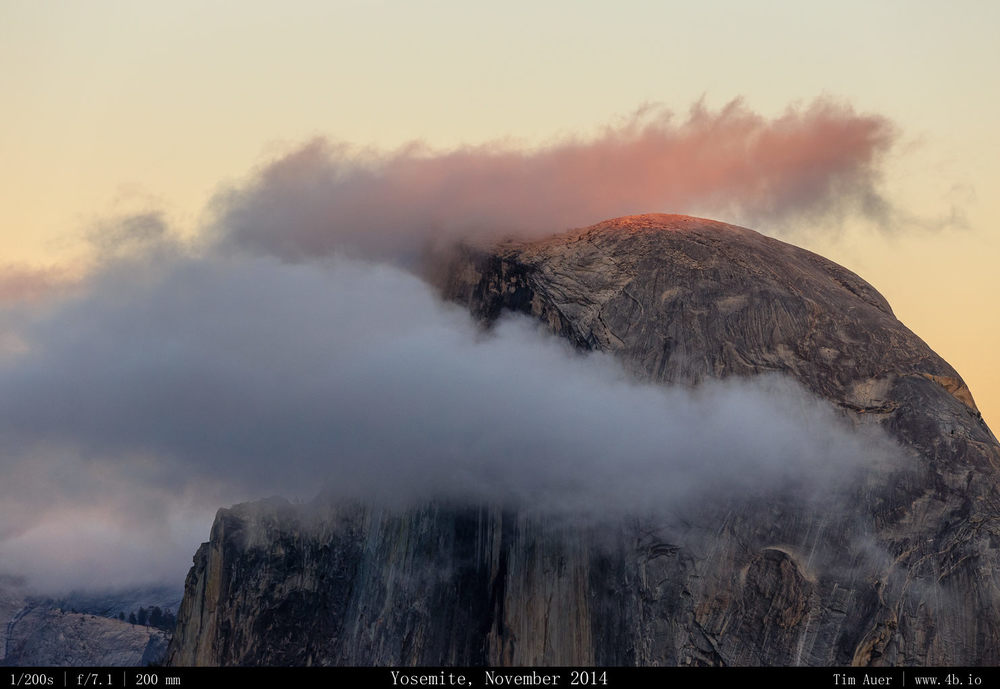



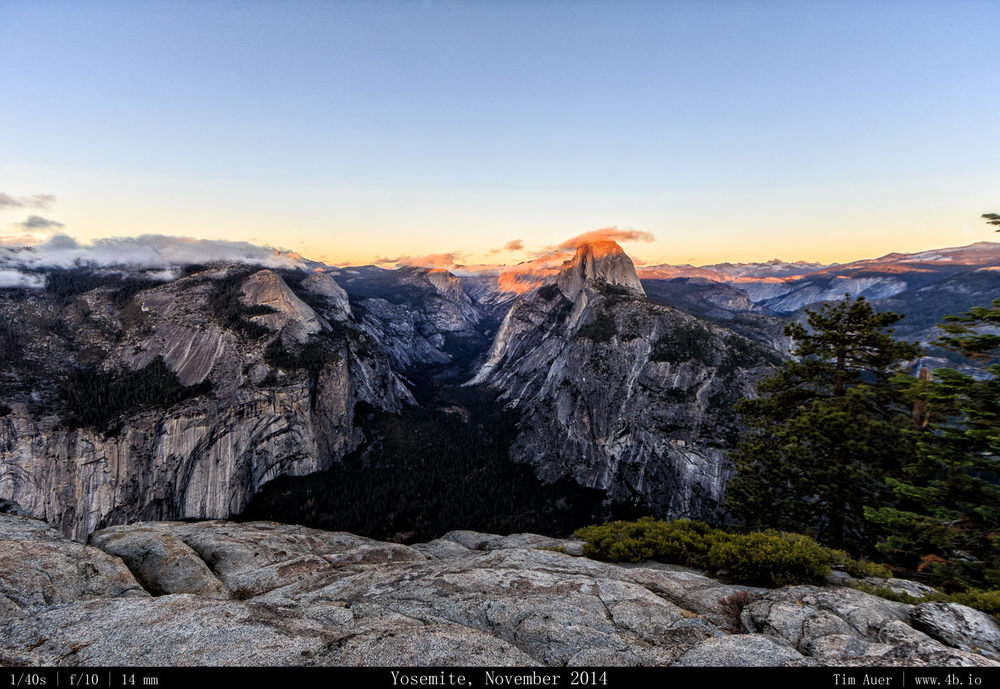
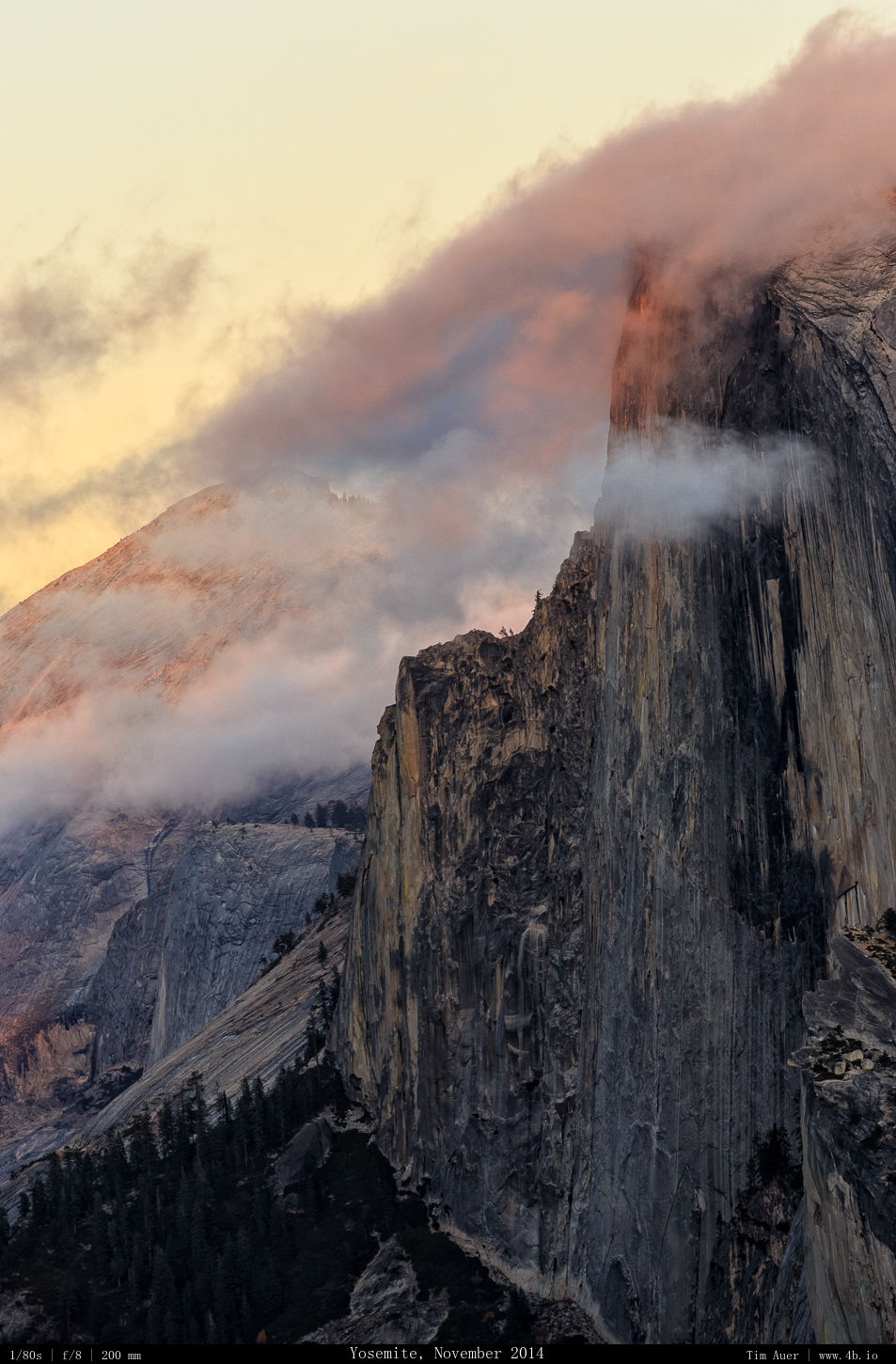
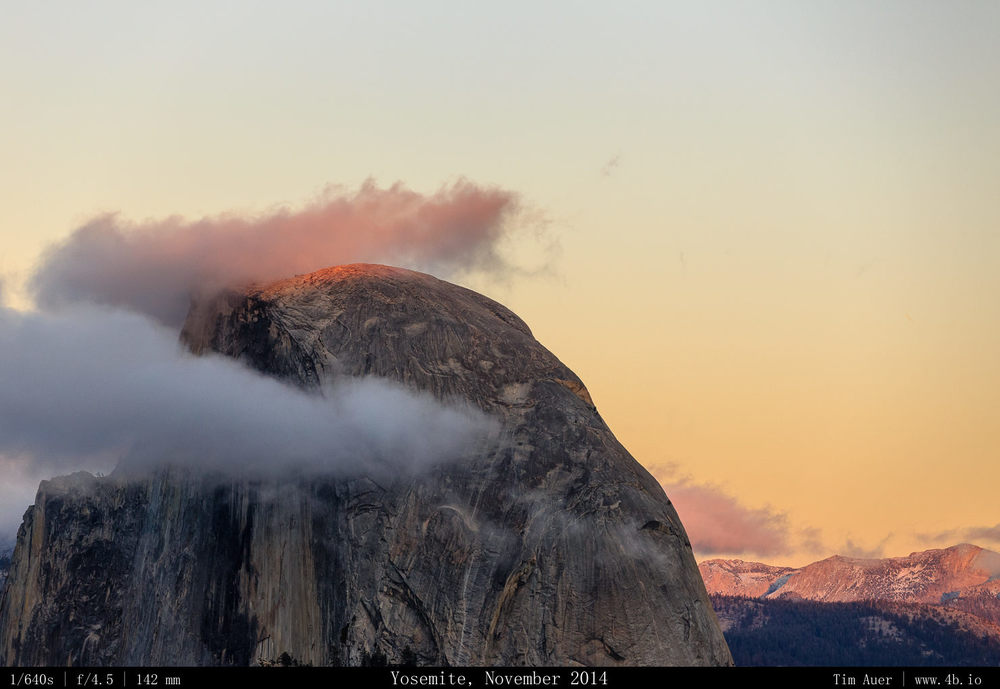

Tim Auer
Quick break from the Churchill processing to upload some photos from the group camping trip to Yosemite! Photos featured here are taken from Taft Point and Glacier Point.







1324 miles driven over the last 48 hours made for an epic weekend warrior trip. This time, I drove north to explore what is (in my opinion) true Northern California. I left work at 15:30 on Friday and drove north for 8.5 hours (the Friday rush didn’t help my time). I didn’t leave California once during those 8+ hours. I came as close as could to leaving the state, by skirting the Oregon border for the last 30 miles, but I didn’t actually cross over. Northern California is big. For a state that seems to define LA as being southern California, and SF being northern, I wonder if the first person that made this generalization ever consulted a map…anyway, I finally reached my destination Tulelake at midnight and camped (if I dare to call sleeping in parking lot car at a wildlife overlook ‘camping’) near Lava Beds National Monument. I was up before the sun Saturday morning, and I stayed in the Tulelake area the first half of the day, before finally crossing the Oregon border and headed up to Crater Lake. I found my way back into California later that night and “camped” in the middle of the Klamath Basin wildlife refuge and waited for the sunrise to come. By mid-morning, I pointed my car south and made the long, but enjoyable drive back home, which took only a brief 7 hours in this direction and got me home in time to catch the start of the 49ers game. So the question is why would I drive so far for such a short trip? And no, I don’t even get the 3-day MLK holiday weekend. When it comes to my decision making process, it is unclear if there is logic or impulse driving it, and this trip was no different, but there were many other important compelling reasons to go on this adventure, but I will narrow it down to two:
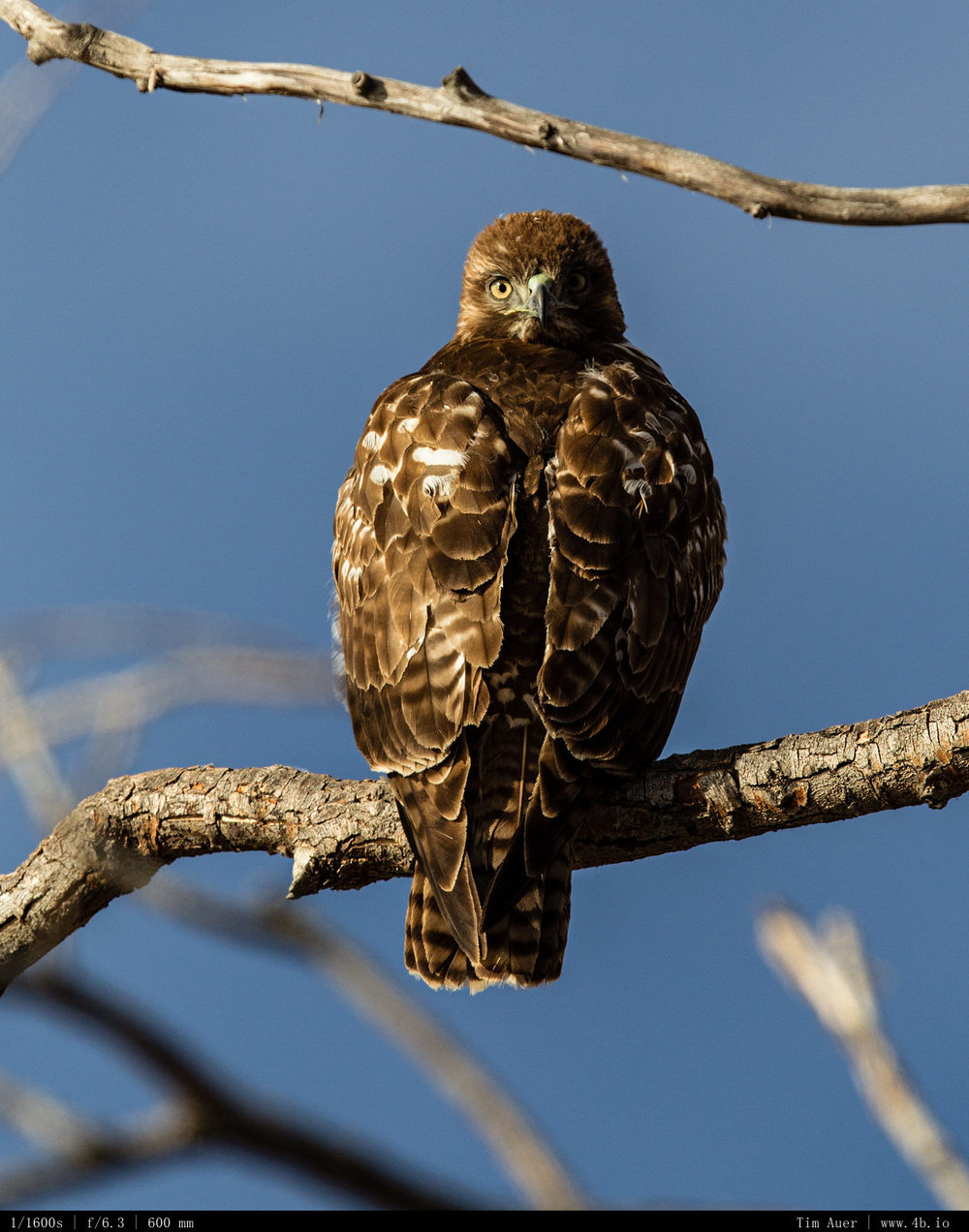
(1) Bald Eagles – The Klamath Basin is considered to be the preeminent location in the lower 48 to view wintering bald eagles. They are funneled from their summer territories in Alaska and northern Canada down the Pacific Flyway to these wetlands along the California/Oregon border. Here they amass in large numbers and feed on the snow geese that are also wintering over here. Well, I don’t know what was wrong, but the results weren’t exactly “good” in terms of eagle activity. I saw about 8-10 bald eagles, but only one in flight, and none fishing or feeding. There weren’t many waterfowl there either. I don’t quite know what is going on, and plan to investigate this further to understand why, but I wouldn’t be surprised if it has something to with the lack of reason (2)…
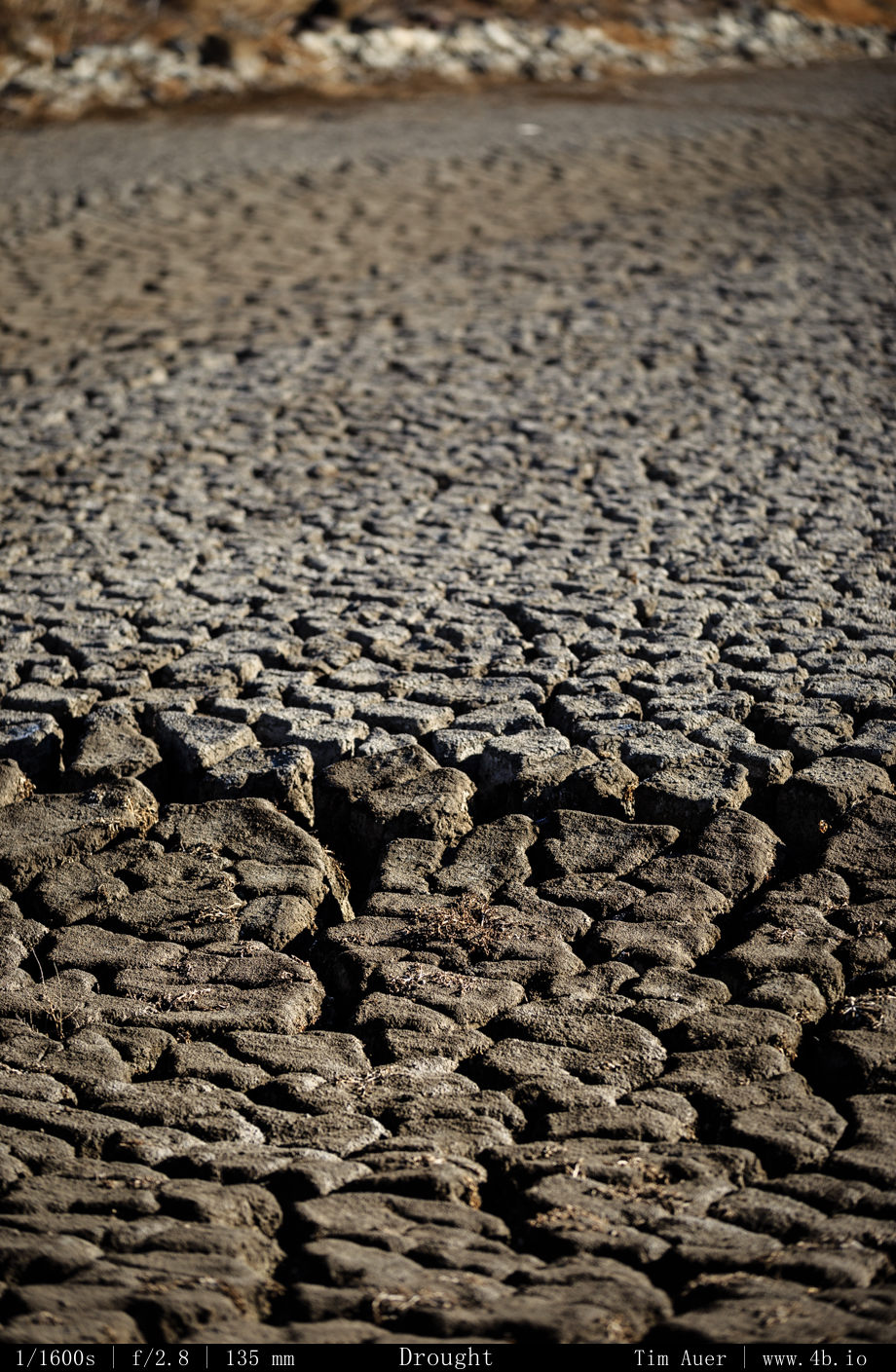
(2) Snow – California is in the midst of a god awful drought, and it is bad for everything here. The Sierra’s don’t have any snow, which means the water supply won’t be replenished for both human and nonhuman organisms. In fact, it is so serious I don’t even want to mention how this will impact the prospects of a California ski season (or photographing Horsetail Falls in February). In the scheme of things, none of that seems particularly important. It is literally drying up and catching fire here. “Southern” California is burning up as we speak with a man-made fire. While not unusual for a state accustomed to wildfire, anyone could tell you that they typically don’t happen during the “wet season” of January. The drought’s impact was made crystal clear on this weekend’s drive. There was no snow anywhere in the Klamath Basin, it was still cold (nighttime temps around 5 F), there just wasn’t any moisture. Even Mount Shasta looked strange and uneven. The north and eastern faces appeared to have a lot of snow, but the western face, as viewed from Weed, CA was barren and brown. (I also want to investigate the exact reasons behind this too). I did eventually find snow, when I drove north two hour to Crater Lake. But the news wasn’t great there either, while there was about 3-4 feet of snow covering the rim, this is only 24% of the average snow level for this date.
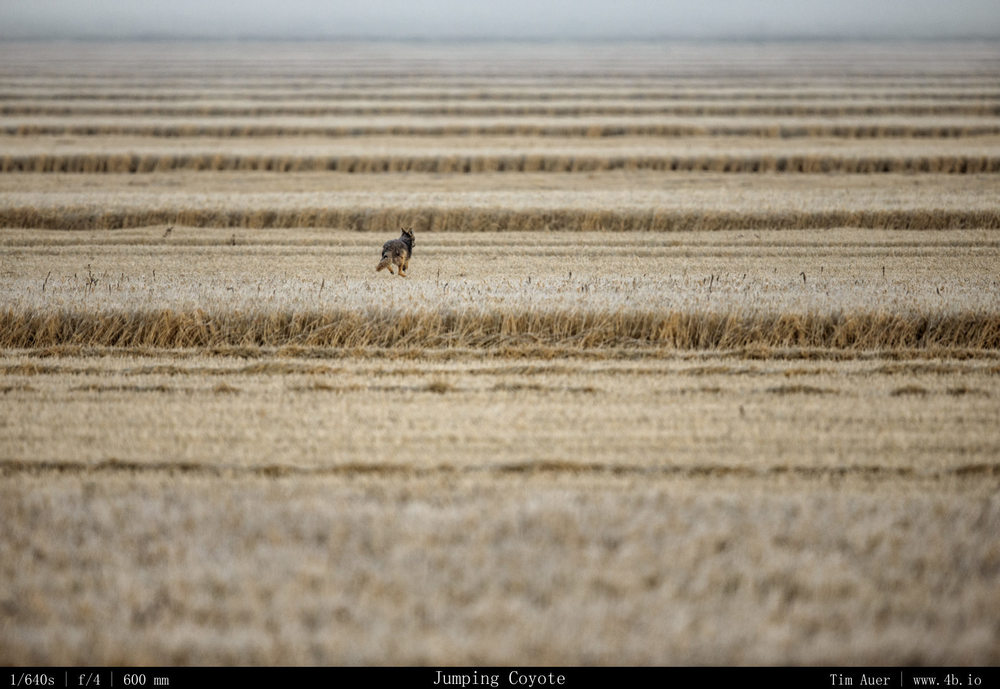
The outcome of this trip was a bit different than expected (limited eagles), but overall it was far from disappointing. I finally found a top-notch wildlife viewing location in California. Natural beauty is easy to find in this state, almost anywhere you look is beautiful, but wildlife frolicking in those scenes tends to be rare. And while the eagles weren’t performing (the nerve of those wild animals!), their cousins in the hawk, harrier, and falcon clans put on a great show. Plus I saw over 10 coyotes, several flocks of snow geese in formation passing by, California pheasants, black crowned night heron, mule deer, and in the two mornings there were two stunning Mount Shasta sunrises. That, combined with the prospect of grappling eagles, pronghorn, black-tailed deer, owls, and others the Klamath Basin is a highlight of California’s natural heritage that hasn’t yet been tagged and spoiled like many of the bears in Yosemite Valley.

After visiting Crater Lake for the second time in my life, the first was summer 2004, I left the park convinced it is at its best in winter. As is the case for many other national parks, winter provides a more peaceful and beautiful natural experience. Even though the park is limited to a tiny parking at Rim Village, and the road that circumnavigates the rim in summer is closed, I felt like there is more potential here during the snowy season than in the summer. The road closures and winter weather limits the amount of visitors, allowing plenty of space for snowshoeing, cross country skiing, and winter camping, all while having a view of the lake.

And finally this weekend served a great dry run for my upcoming trip to Yellowstone in two weeks. I worked on my wildlife tracking, practiced shooting in the cold, and figured out the last bit of gear I want/need to bring with me to Wyoming.
Plus there was a town that had the same name as my mom….with an extra “r” in the spelling…


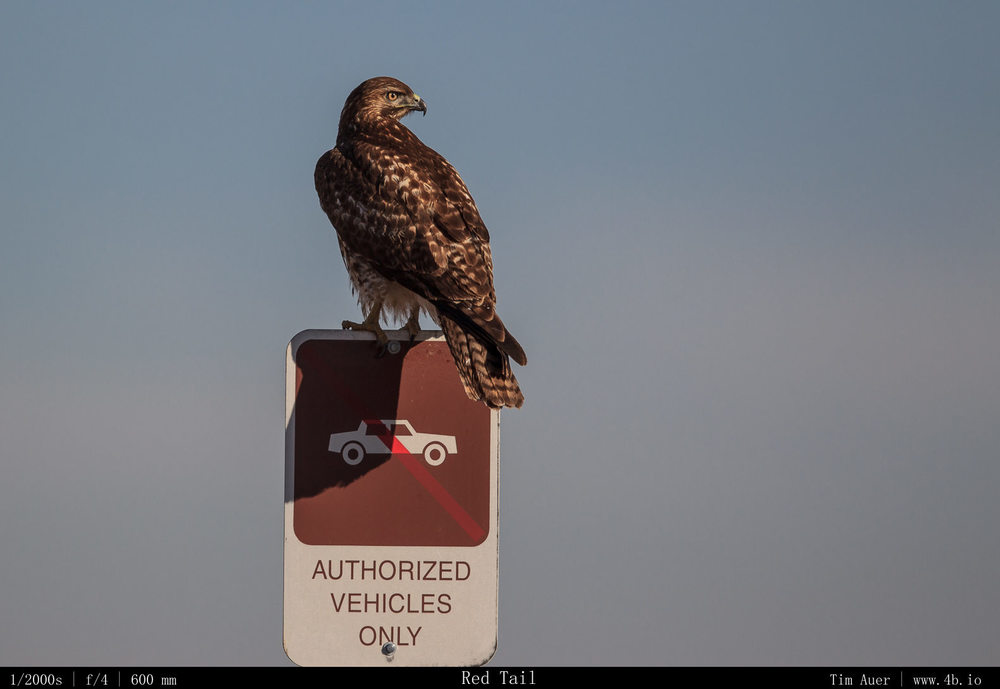
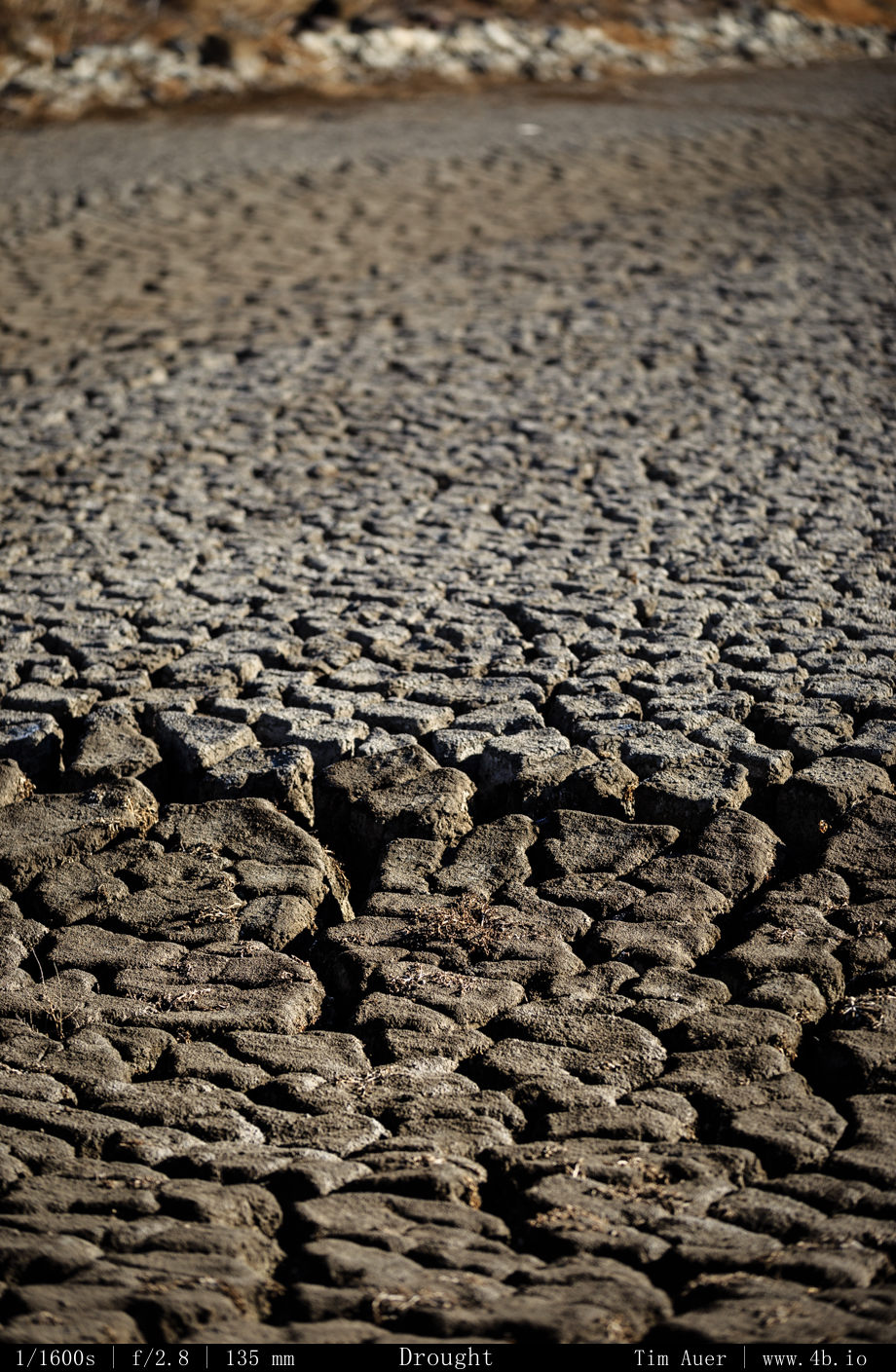


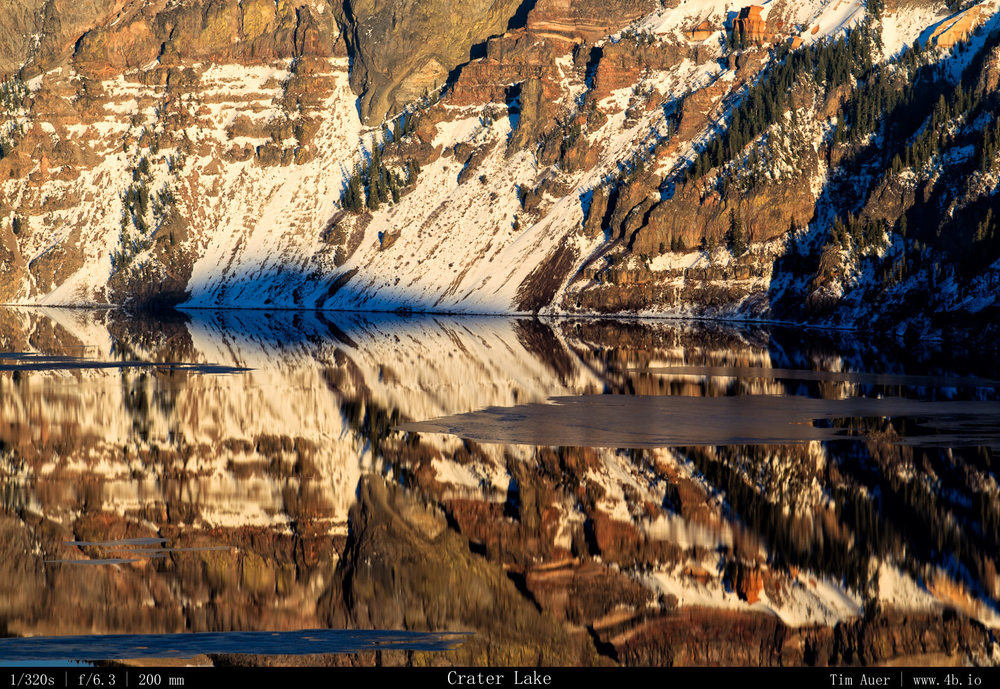
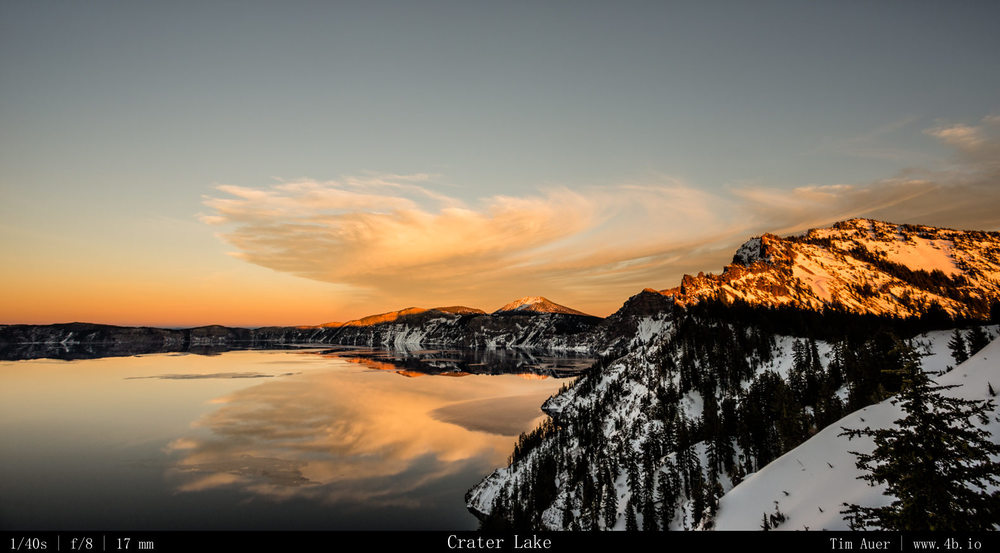
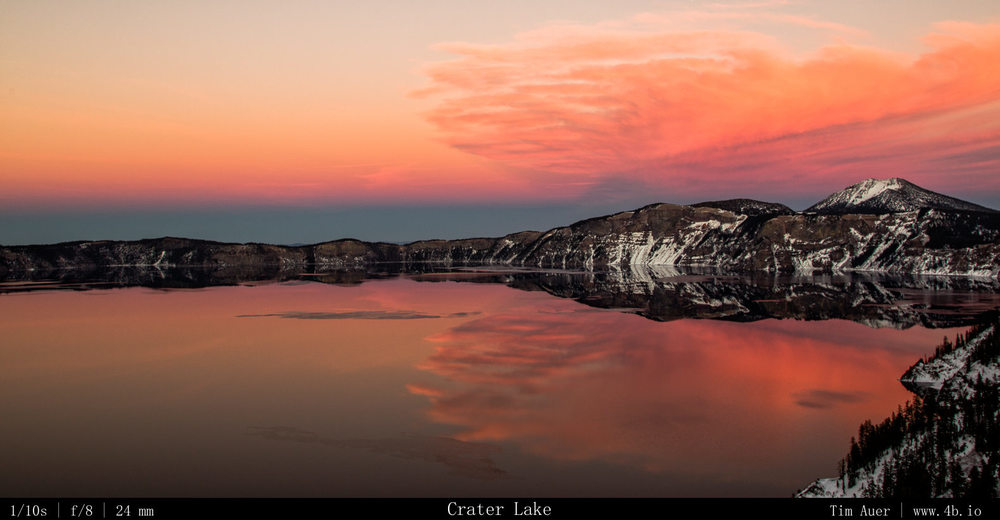


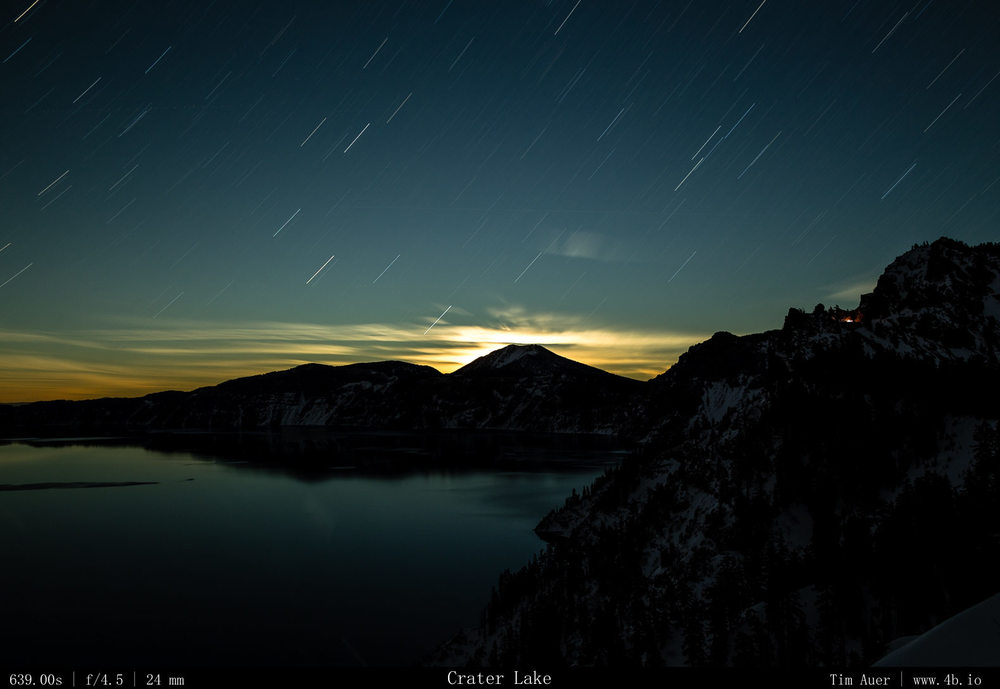
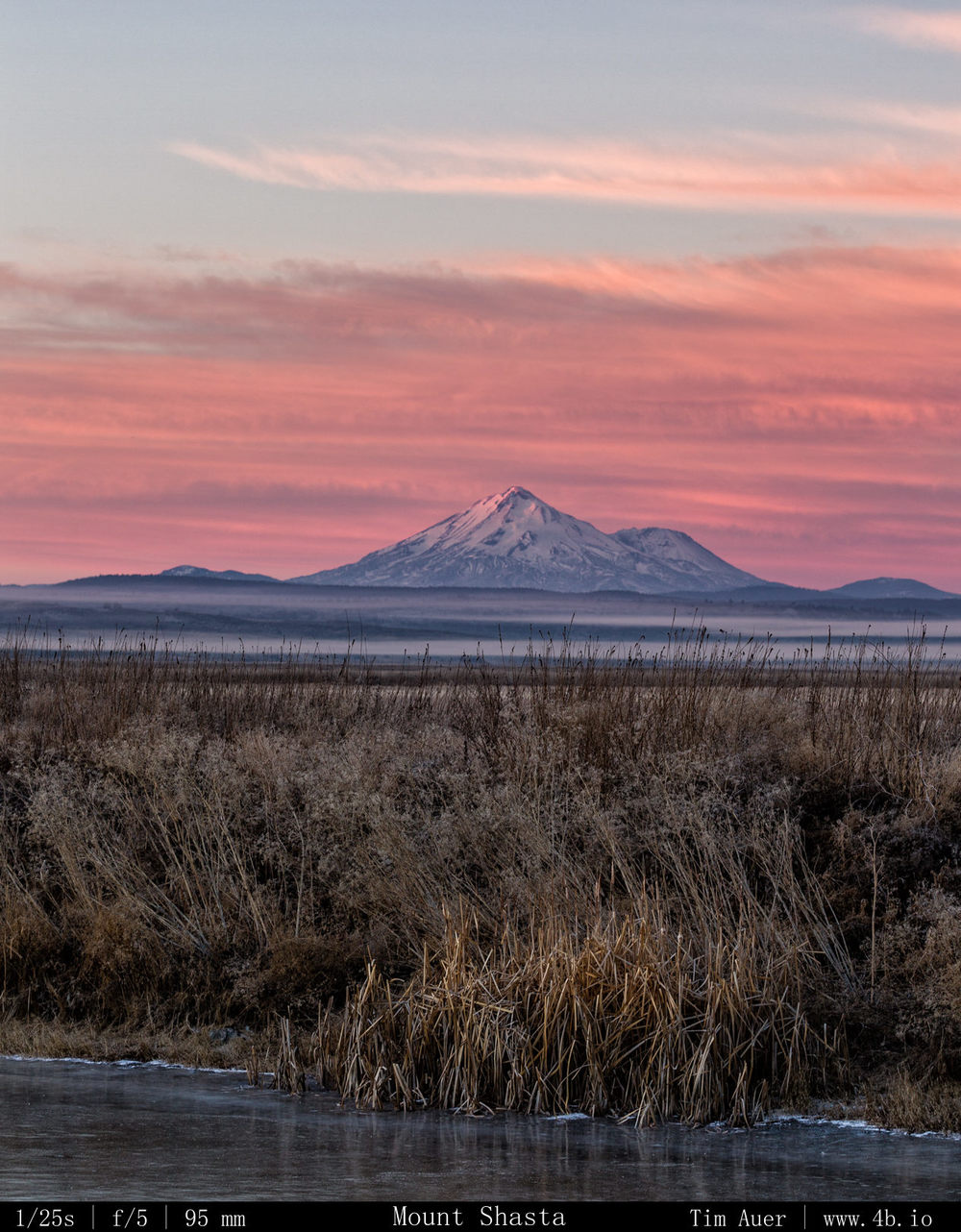
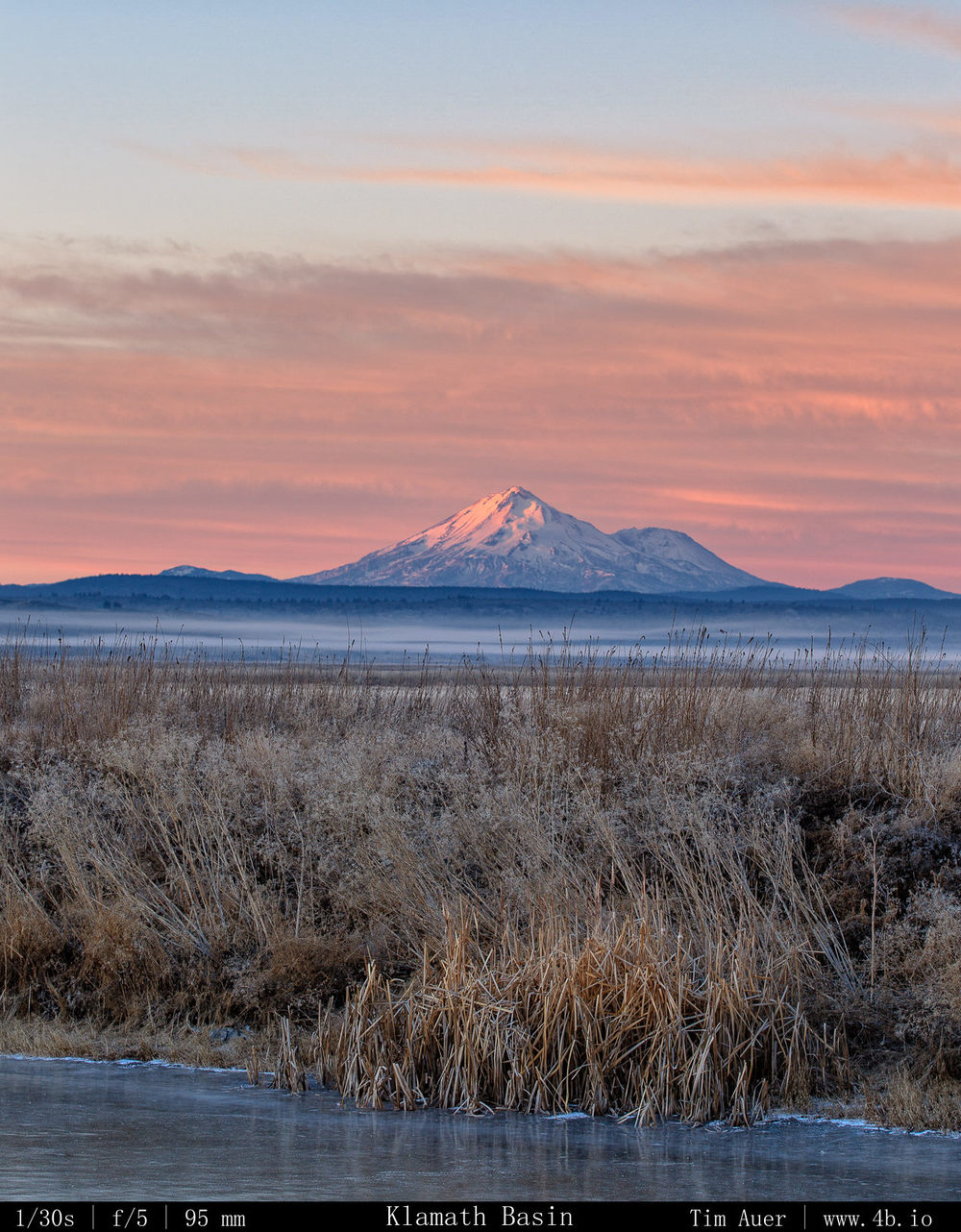

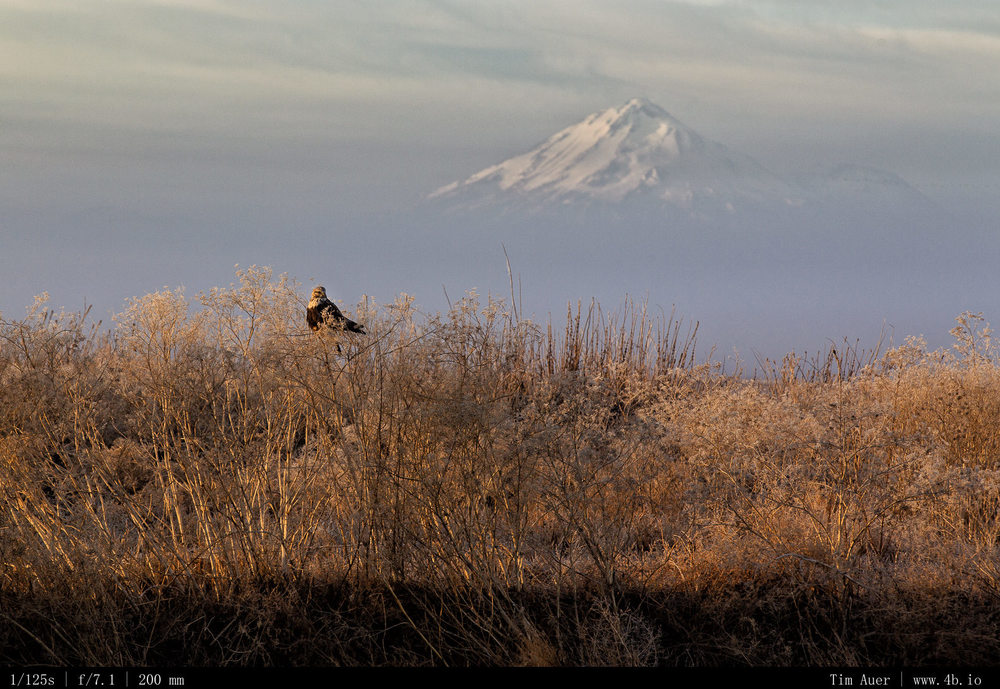

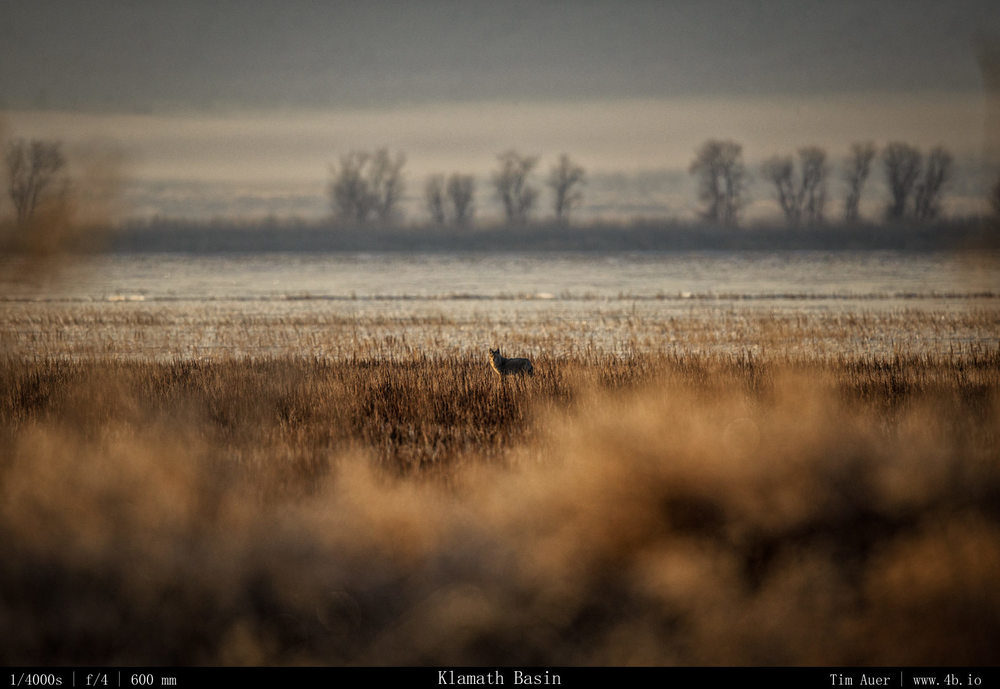

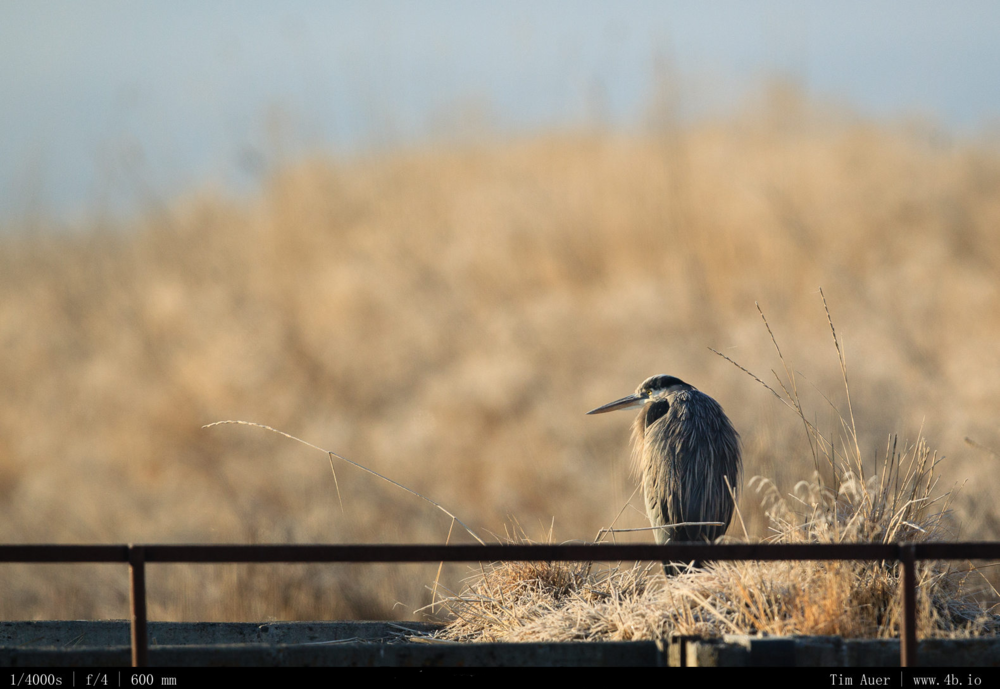

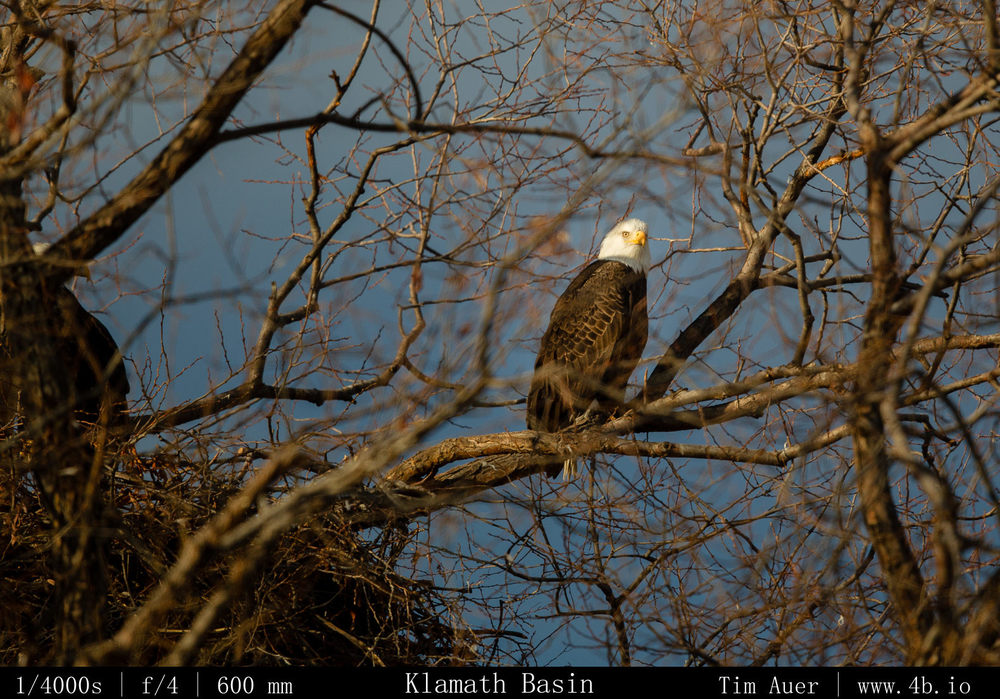

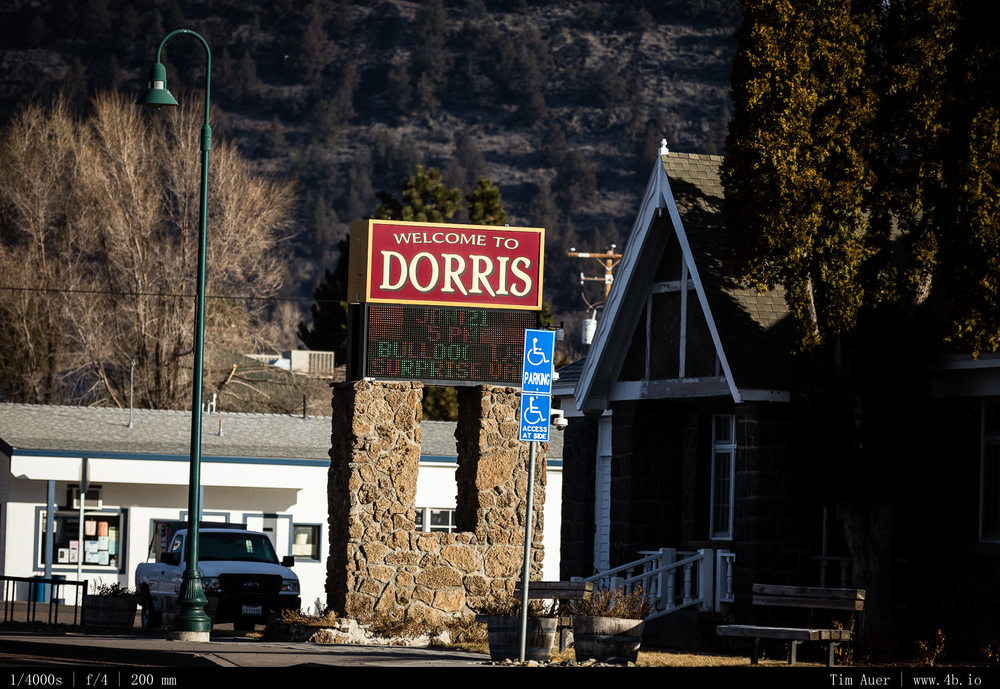
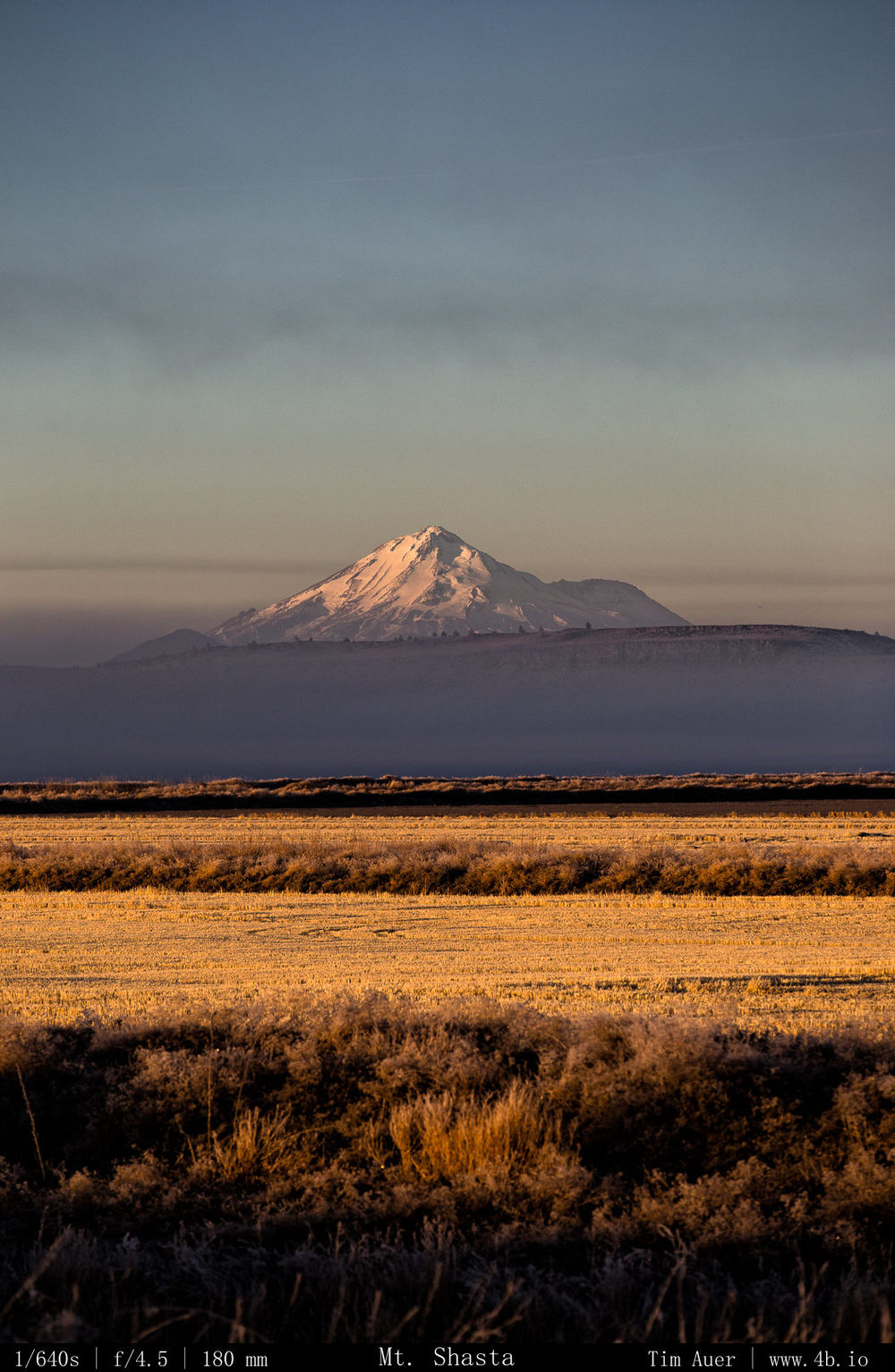
November 22-24 was a nice weekend spent in Yosemite Valley. The previous week’s snow and high winds kept the passes closed throughout the weekend (and eventually turned out to be closed for the season). While initially disappointed by this limitation (the high country will soon be closed for the next 5-6 months), it turned out to be nice, because it forced us to focus on the valley and find suitable photographic opportunities there. Once the pass is closed for the season, I will be able to pursue new areas off the beaten trail in the valley this winter.
On Friday morning, before work, a high wind warning was issued for the central and southern Sierra Nevada, closing all Yosemite campgrounds. From the reports, this wind storm seemed serious, sustained winds of 40 MPH with gusts over 65 MPH on Valley floor and 100MPH winds along the high ridges. The original plan to stay in Camp 4 Friday night had been derailed. But instead of postponing the trip for a night, I was actually encouraged by the challenge of finding a suitable place to sleep in or near the park….We left Mountain View at about 16:30 on Friday afternoon and arrived to an entirely still and quiet Yosemite. There was barely a breeze. Nor were any of the roads debris strew. The hopes were high that the NPS would have lifted the closure. No such luck, the campgrounds would stay closed until late into the next morning.
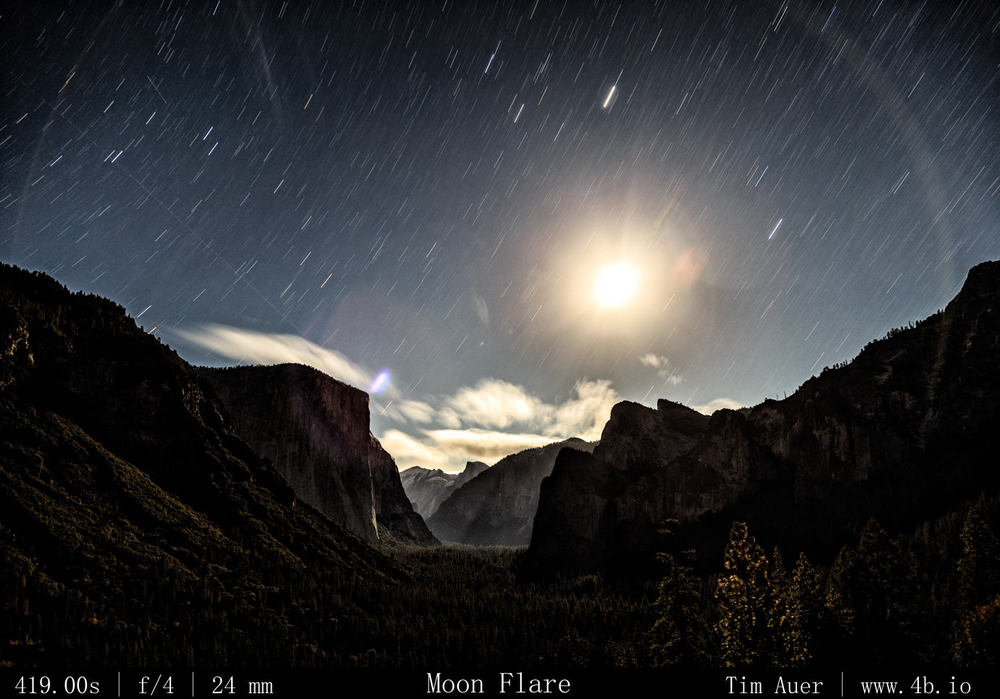
Once we arrived in the park, we followed the loop to see if there was any wind damage, then went straight to Tunnel View for long exposure photography of the valley, under the power of the waning Gibbous moon. We shot long into the night there. Initially, I had thought about climbing the Pohono Trail at the Wawona tunnel and doing time lapse photography at Artist Point, and, should we so desire, sleep on the Old Glacier Point Stagecoach Road. But given the high wind warning (despite there being no wind), it wasn’t worth the risk to to ascend in elevation.
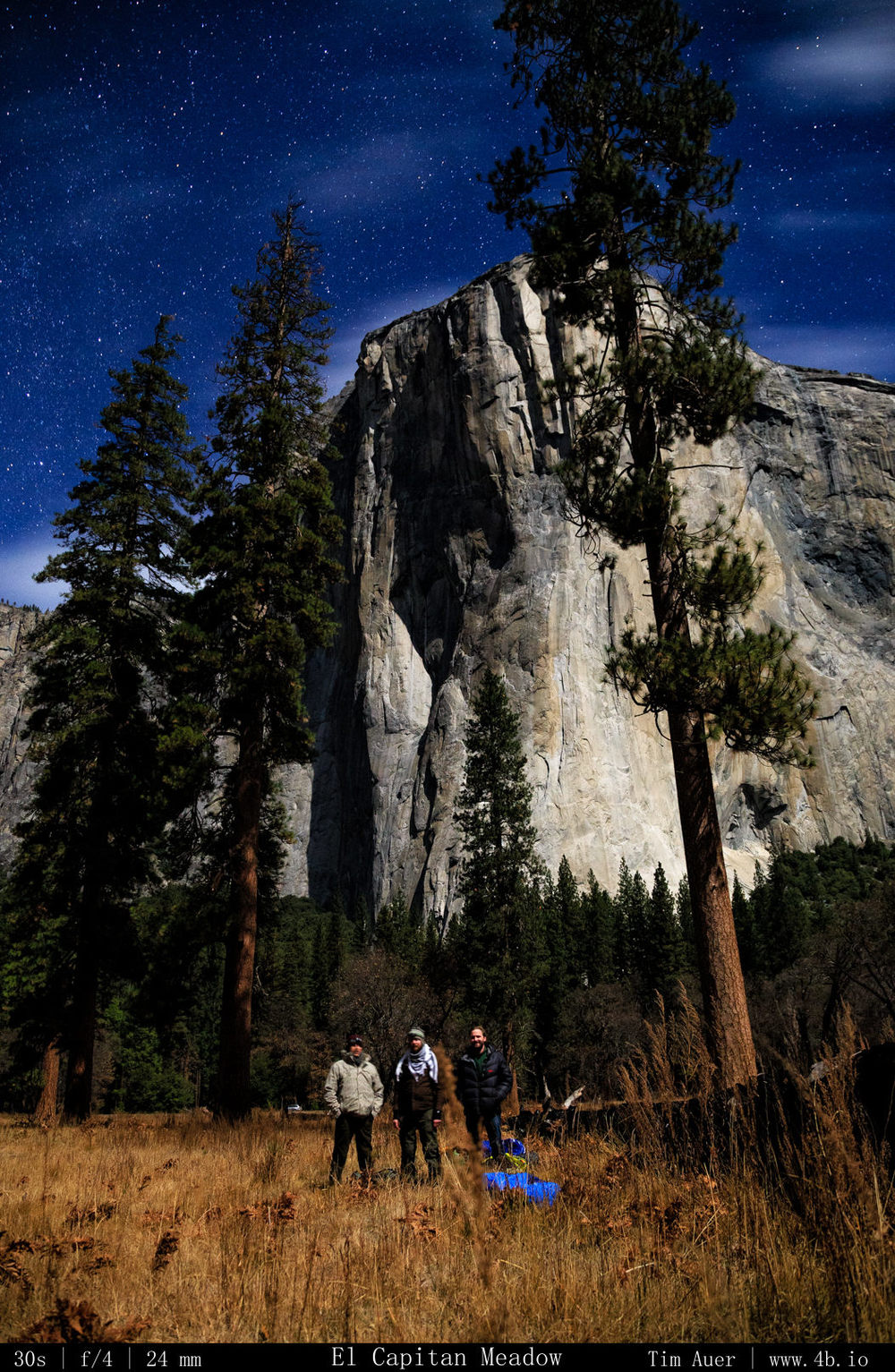
After completing a couple laps of the Valley Loop at about 03:00-03:30, the El Capitan Meadows proved to be the best spot for “stargazing” for the rest of the night. While walking through the meadow, looking for a spot that gave unobstructed views of both El Capitan and the Cathedral Rocks, we came upon the trunk of a massive Sugar pine resting on the meadow floor. It had fallen long ago and was half burned out. But it was massive and shielding us from the Northeasterly corner of the valley and obscured us from the road. We settled in for a couple hours of ‘rest’.
It was a nice nap there. I did some long exposure photography of the Cathedral Rocks and ever changing cloud+star combinations. It is rare to be disappointed by El Capitan when it is towering over you as you stare up at it in a sleeping bag. By now the temperature was dropping rapidly below the dew point, and the moisture was freezing on everything, I decided to burrow deep into my mummy bag and watch the stars till the arrival of morning twilight.
The Steller’s jay doesn’t wait for sunrise to begin their squabbling. A pair of the birds made their disposition abundantly clear in the pre-dawn hours. After being jarred awake by the birds, we took in the tranquility of Yosemite Valley at 06:00. Frost was covering the grasses, tree trunk, and of course the sleeping bags.
But the bags performed their duty well, and despite the short amount of rest, having the rare opportunity to wake up, undisturbed, on the floor of one of nature’s greatest monuments is truly special. The crisp air and a frost glistened view of El Capitan were the first experiences of the morning (after the jays). I felt rejuvenated.
The goals for Saturday weren’t overly ambitious, but I was hopeful that the passes would be opened, but, again, they weren’t. We returned to Tunnel View for the early morning perspective, after seeing in washed in moonlight. Then we picked a spot and set up in Camp 4, which by late morning was officially reopened. Afterwards we went for a hike along the Merced River, looking for the last splashes of autumn colors and reflections. Came back to the campsite and relaxed for a couple hours in the mid afternoon glare. Did some wood chopping with the axe Matt gave me for my birthday. Sunset photography was going to be in one of my favorite spots, the Columbia Rock, 1000 feet up the valley wall along the Yosemite Falls trail. With 60 switchbacks, the hike is a 3 mile vertical climb that is extremely grueling, even without the excess camera gear.
The sunset was interesting, the clouds were in constant motion, draping and covering Half Dome and Clouds Rest for extended periods, but would break up for brief instances and yield dramatic views of the rock formations splashed with rich, pink light. We stayed at Columbia Rock shooting until the end of Nautical Twilight and begin the steep descent back in the dark.
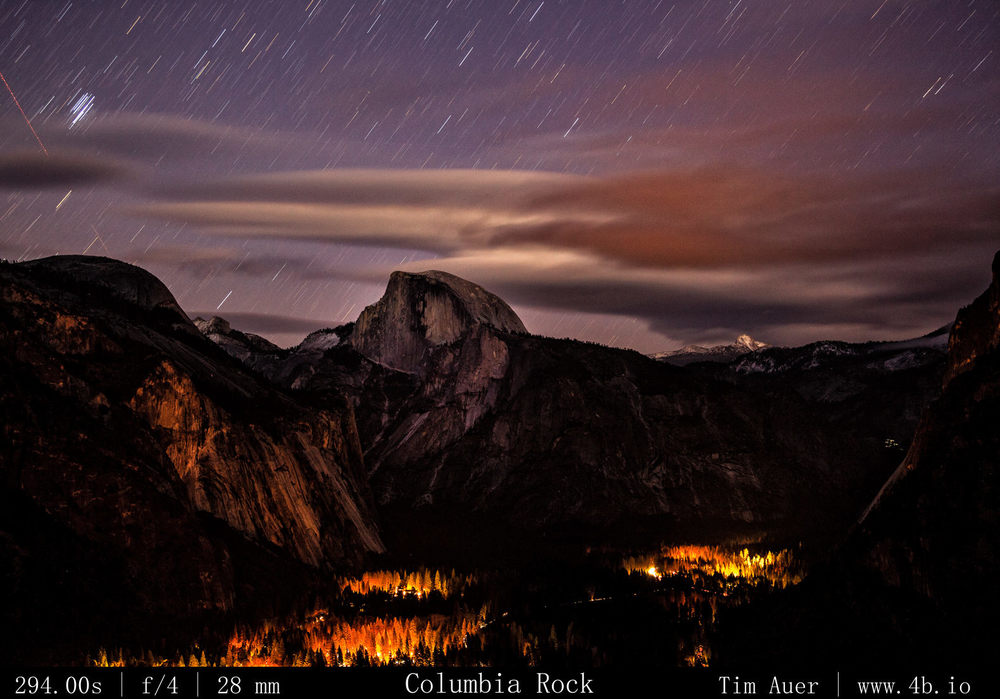
After hiking back to Camp 4, we had dinner and Chad made a big fire. The last bit of photography I had in mind for this trip was to catch the moonrise over the valley wall from the “Gates of the Valley” view. The moon was scheduled to rise at about 22:00, at the horizon, but wouldn’t make it above the valley wall until well after 23:00. So I took my time and ventured out at around 22:45 to the Valley View location. crossing paths with couple coyotes in the process. I had two cameras firing from multiple positions. In fact, I took advantage of the low flowing Merced to set up out in the river. Seizing the opportunity to shoot from vantage points typically inaccessible at other times of the year when the water volume is higher. The conditions weren’t particularly easy to shoot in. Waves of fogs and mist would glide through the valley floor in irregular intervals, influencing the air temperature in the process. Before the fogs, it would be a few degree below freezing, as it rolled past the temperature would rise above freezing, only to drop again after it was gone, and leaving a coat of ice on my lenses. As the frequency of “fog waves” increases, I had to drastically decrease my exposure times to allow lens defrosting. Before the fogs, I was doing 900 s exposures, by the time I had had enough, I was down to 250s exposures.
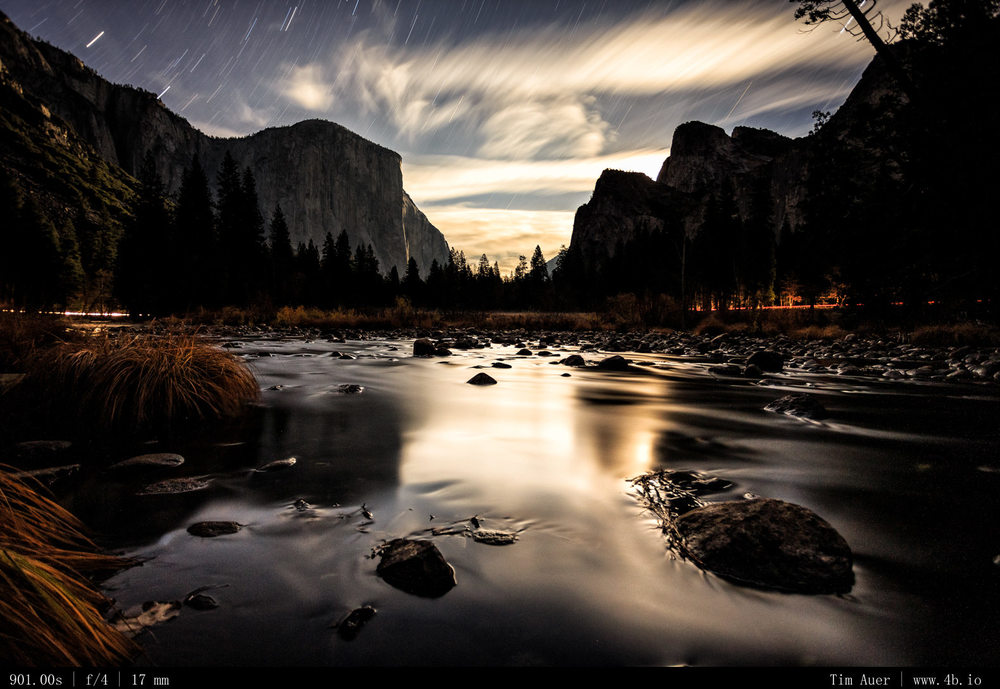

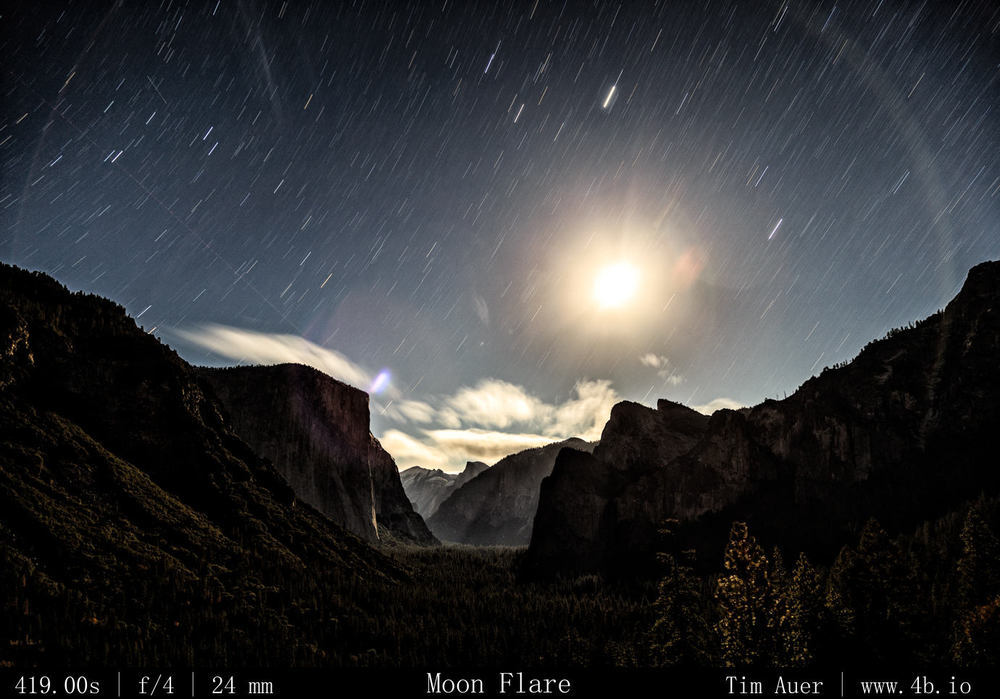
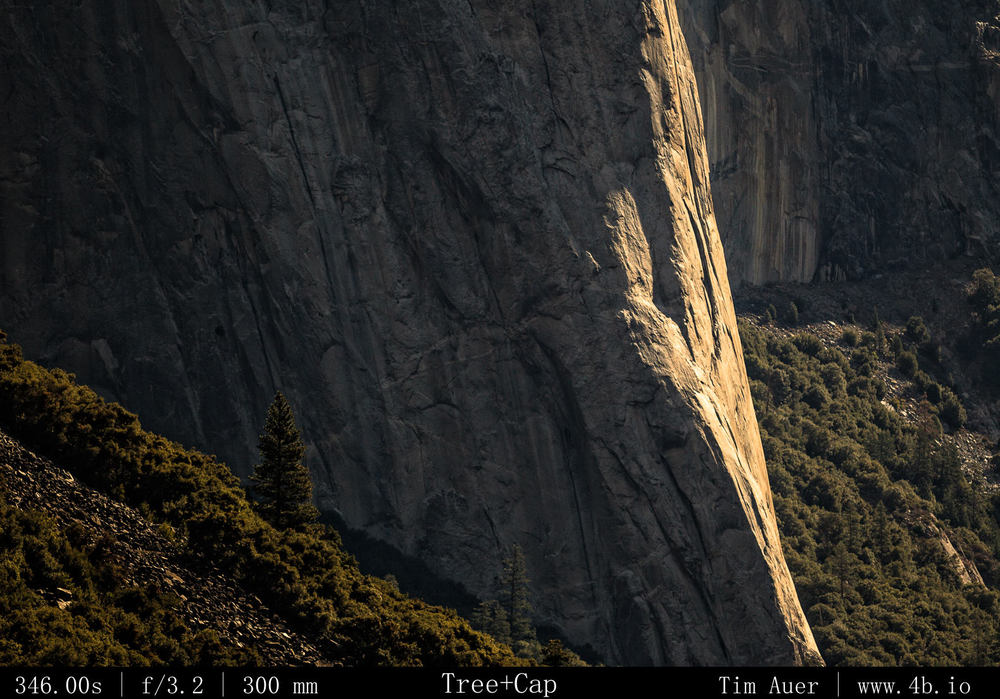



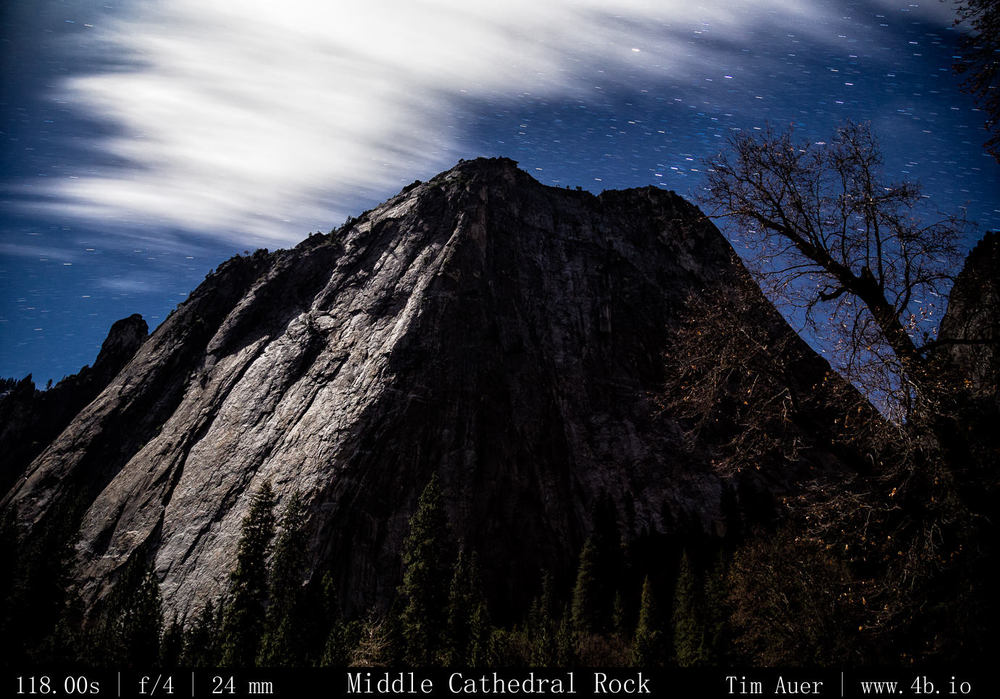
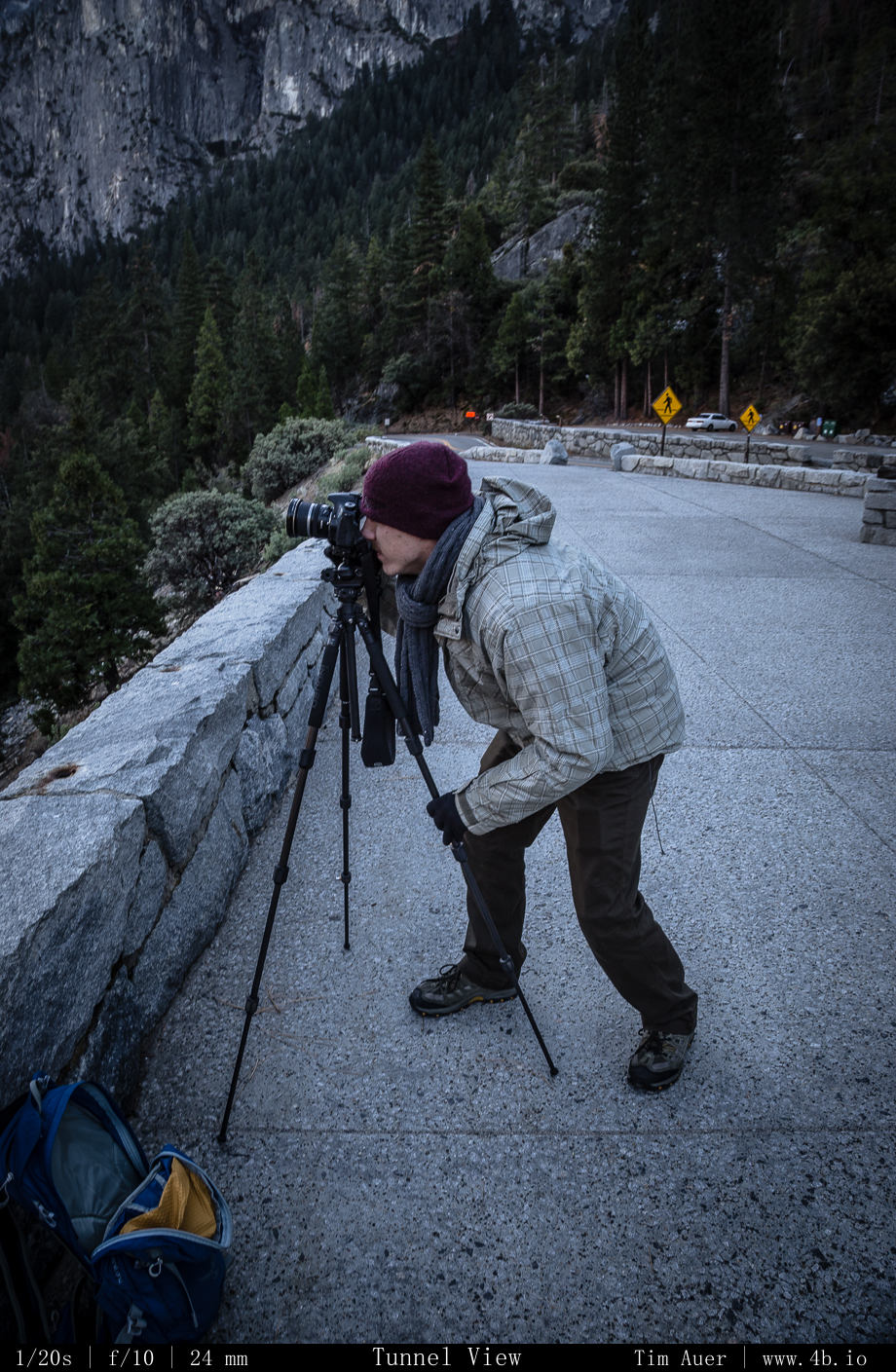



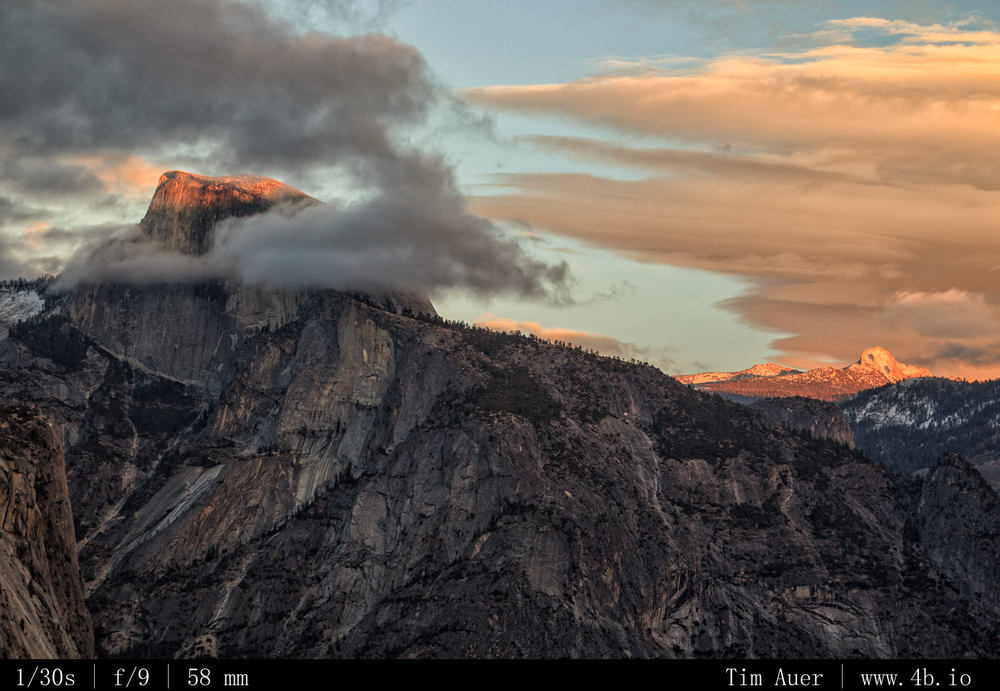
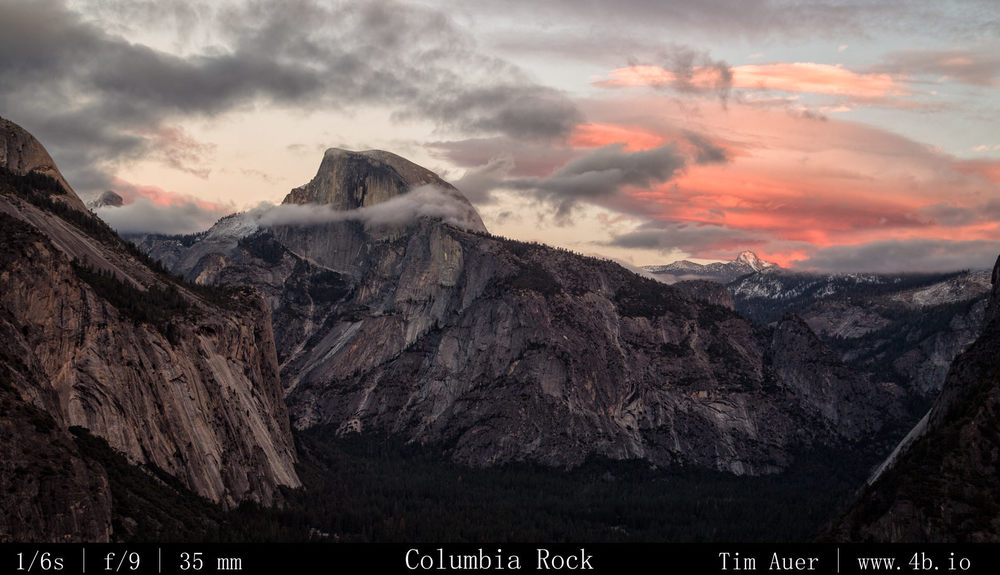


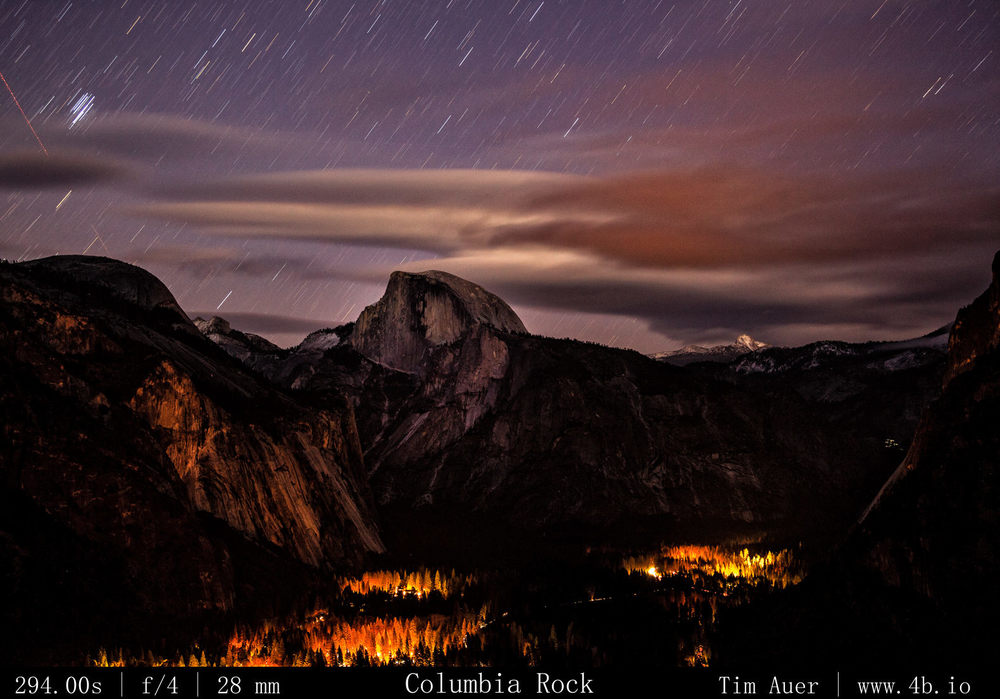

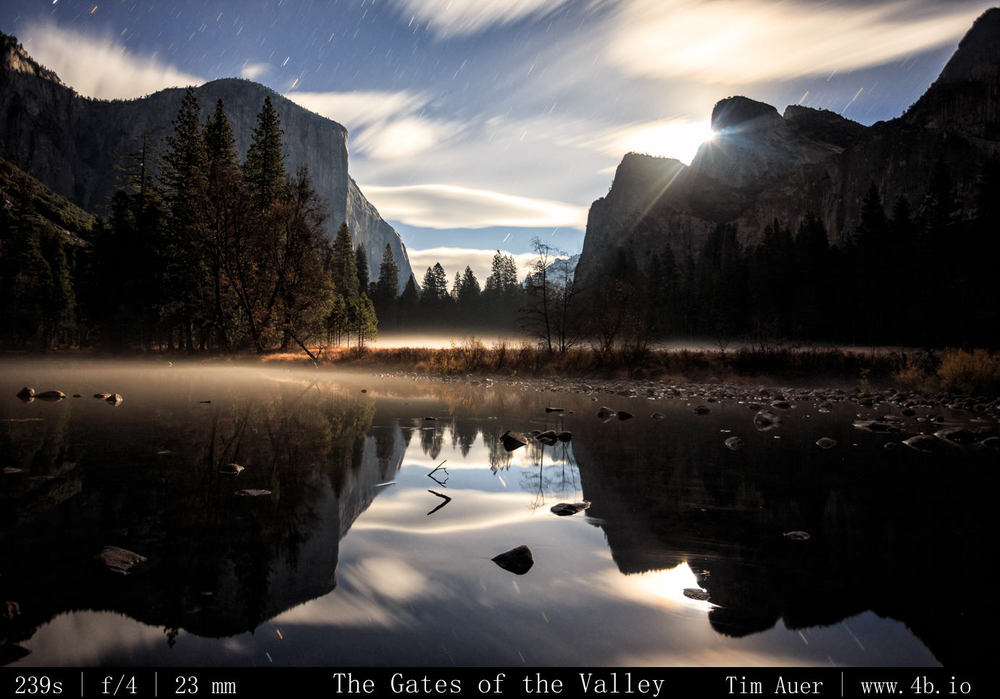


August 9 – 11, 2013
*Gallery at bottom*
Another August, another Perseid Meteor Shower….the 2013 edition. Not including the weeks of research and my previous scouting trips, I began my search for the Perseids late Friday evening for what was an astonishingly grueling three night photo epic to the dark skies of the Eastern Sierras…
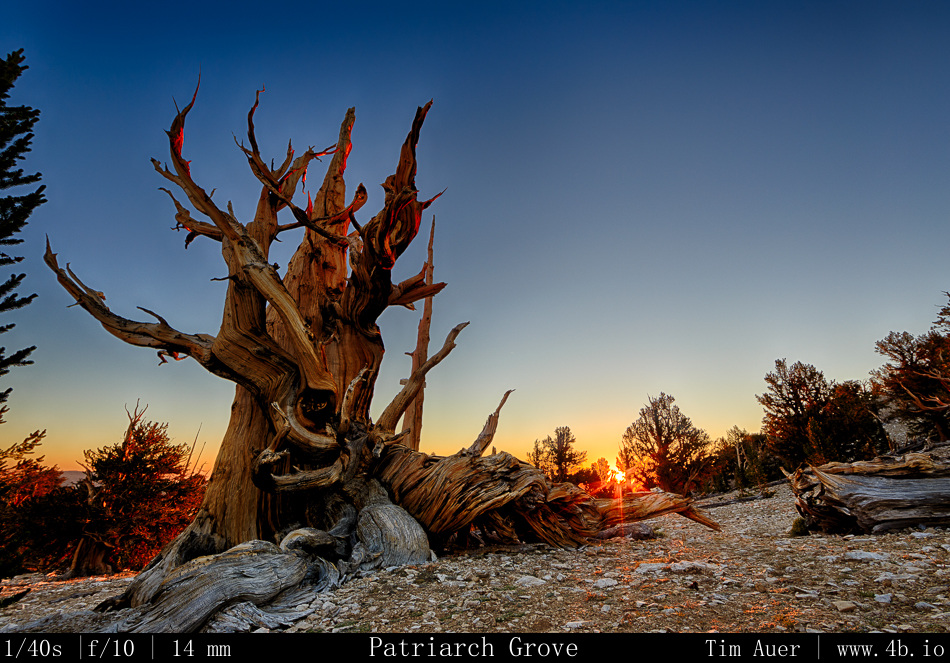 Golden red morning light
Golden red morning light
Leaving my house in Mountain View at 21:00 on Friday evening Aug 9, I began my drive East. As Friday blended into Saturday, I reached the Big Oak Flat entrance of Yosemite National Park. According to the weather board at the entrance gate, the daytime temperature for the high country of Tuolumne Meadows that day was 90F. I continued on Rt. 120 through the park towards Tioga Pass. At 01:00, made a brief stop at Olmsted Point, where there was access to a vast and clear sky. I snapped a few photos in the direction of Tenaya Lake, and caught glimpses of my first Perseids of the season. High up in the Sierras, the temperature had plummeted from its daytime high of 90F, and hoovered at the 28F mark (according to my car thermometer). After making my way over Tioga Pass and through the East Entrance of YNP, I began my descent towards Mono Lake. The temperature warmed gradually as I lost elevation. Arriving at the South Tufa Area at 02:30 Saturday morning.
There was only one other car in the parking lot. The car belonged to another photographer who happened to be wrapping up his session for night. While I thought him nuts to be leaving as the meteor activity began to peak, I had the entire Lake to myself. I was feeling relaxed and excited. Bats whizzed around my head, owls hooted, coyotes howled. I was even able to see an Owl silently flying 10-20 ft above my head. I was startled by its “shadow” and pointed my Surefire light at the shape, and watched it as it passed by. I’m sure the Surefire did wonders on the owl’s night vision too. Using only a casual, single camera set-up, I shot until approximately 05:30 before calling it a night. As I was getting myself situated for sleep in back of my wagon, Three cars arrived carrying a group of photographers looking to shoot the sunrise. They were in luck because the sunrise that morning turned out to be spectacular. I yearned to capture it, but refrained from doing so. This trip was about the meteors, so I soaked it in without the burden of camera apparati.
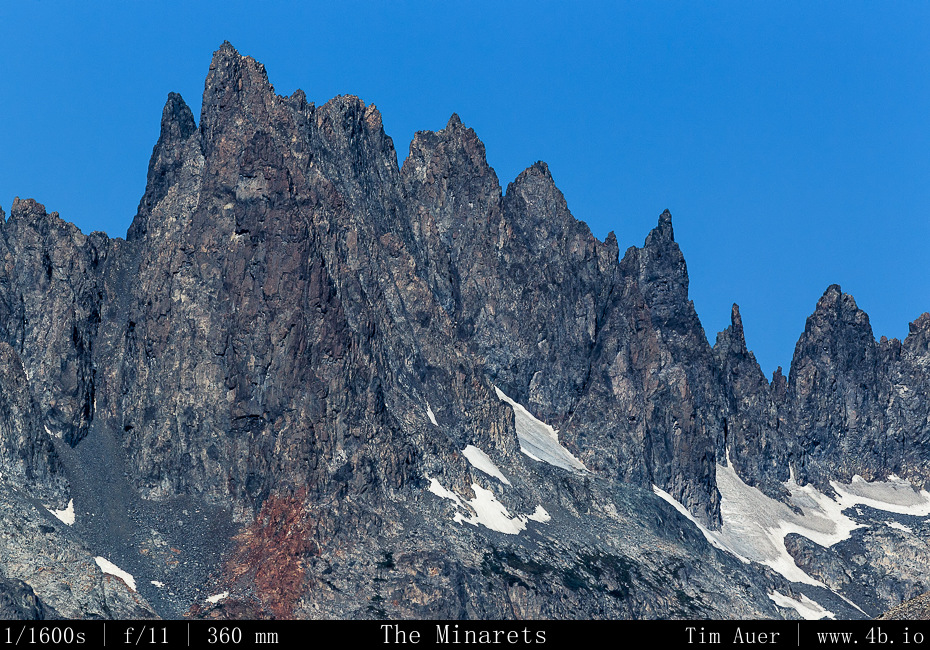 Minarets
Minarets
By 07:30 I was up and eating breakfast at Nicely’s in Lee Vining. I continued south down Rt. 395 towards Bishop, stopping at Mammoth Lakes and the Minarets. Once in Bishop, I stopped in Galen Rowell’s Mountain Light studio and perused his work, seeking inspiration from a master. While there I bought two books, one a collection of technical essays he’d written and the other his best of Sierra Nevada images. I arrived in Lone Pine by early afternoon, bought some food, water, and beer, and set forth into the Alabama Hills….
I explored the Alabama Hills by driving along Movie Road and some its derivative “roads”, doing short over-land hikes to the various arches and interesting granite formations. Treating my extremely low clearance vehicle like it was a Jeep, I was fortunate that I didn’t become stuck or break an axle. While I was exploring new areas of the Alabama Hills, I was also scouting suitable locations to set up camp and shoot the Perseids. While hiking I came across a 5 foot long Gopher Snake, which, upon noticing me, curled into a mock Rattlesnake position, imitating its venomous cousin by vibrating its rattle-less tail in a fascinating sign of defense. Naturally, I got as close as possible and took photos of it.
 Imitation Rattler
Imitation Rattler  Alabama Hills + Sierras
Alabama Hills + Sierras
After searching long and hard for 6 hours, I finally settled on a location that satisfied my requirements. I wanted maximal Northeastern sky exposure and a rock formation that reached into the sky to create an interesting foreground. By the time I found a qualifying location, it was two hours away from sunset. Using the remaining daylight, I set up camp and composed my shots for the night. Tonight would be a 3-rig set-up. During this time before sunset, the temperature was warm, mid-80s, and very windy. Which made it difficult to set-up my tent and change lenses without dust. Fortunately the wind died down as the sun dipped behind the Sierras to the west. I climbed high up on several boulders and literally “bouldered” to get in position. From this vantage point I positioned my 6D+14mm F/2.8 (rental) and 1D Mk.iv+17-40mm F/2.8 angled up towards the Northern sky. These cameras, with granite spires in the foreground would use high ISO and shorter shutter speeds to permit the sharp capture of the celestial bodies. The FF 6D + 14mm prime would allow for longer exposures, while the 1.3x APS-H 1D Mark IV + 17mm zoom would have to be shorter. On the 6D I used a 38s exposure time and on the 1D I used 23s.
At a lower spot and on a smaller boulder, closer to my tent, I positioned my 60D+10-22mm F/3.5 with a minimal horizon and a vast north eastern sky exposure in frame. This camera covered the path that Perseus would race across the sky that night. The 1.6 crop body APS-C 60D + 10mm zoom is wide enough to allow longer exposures, but I used this one to do 10 minute exposures for star trails. My hope was by leaving the shutter open 10 minutes, there would less down time and capture more meteors, at the expense of not being sensitive enough to catch the fainter ones.
 How to prepare for a photo shoot
How to prepare for a photo shoot
I configured each cameras’ intervalometer, and hit go, hoping I’d be able to sit back and enjoy the show with a beer. As I should of expected, that was not the case and I barely finished the beer I drank with my Boudin bread and beef jerky dinner. I stayed alert and was constantly shifting the entire night. Spending the next 10 hours tending each camera and finding different positions to light paint the foreground granite. Wary of rattlesnakes and falling off (or in-between) house sized boulders, I put on a pair of jeans and resolved to never take a step without putting a light there first, and to always follow the same route used to climb up, on my way down. There would be no trail blazing in the darkness. By 05:00, I was exhausted, but satisfied with the meteor activity, I went to my tent and took a nap until the sun rose above the Inyo Mountains and shone into my face at about 07:00.
The highlight of the night: capturing the single brightest meteor. A massive green fireball that seemed to burn itself through separate stages, like a Saturn V rocket, as it skipped across the atmosphere. Not only was I able to capture it with one camera – I had the good fortune to record this event on all 3 cameras. Each one showing a slightly different perspective of the same meteor.
(For less confusing examination of the multiple perspectives, see the gallery below)
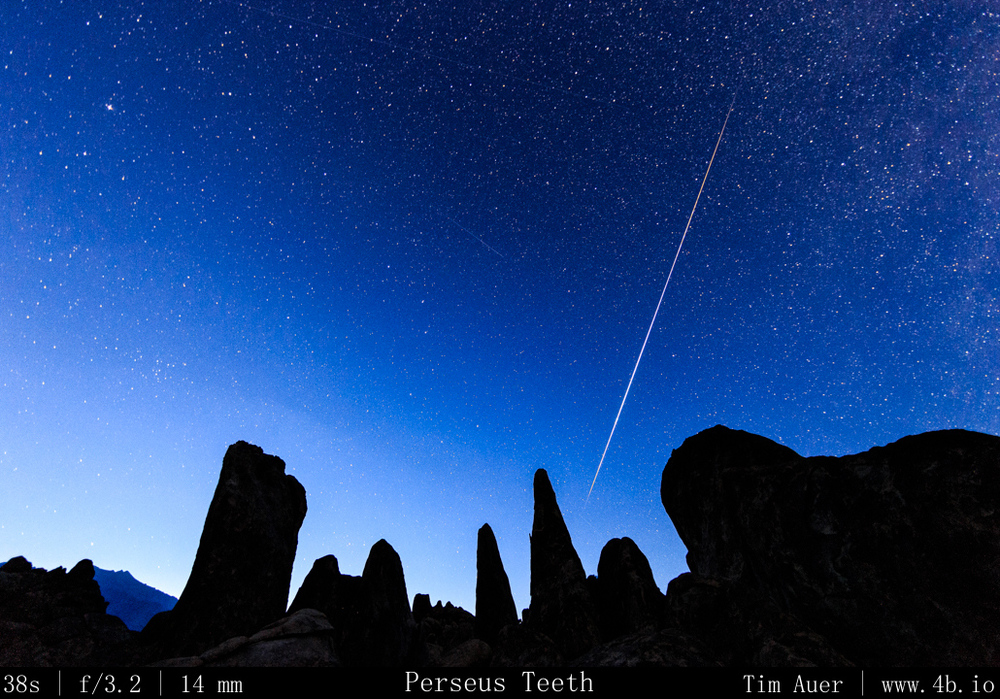

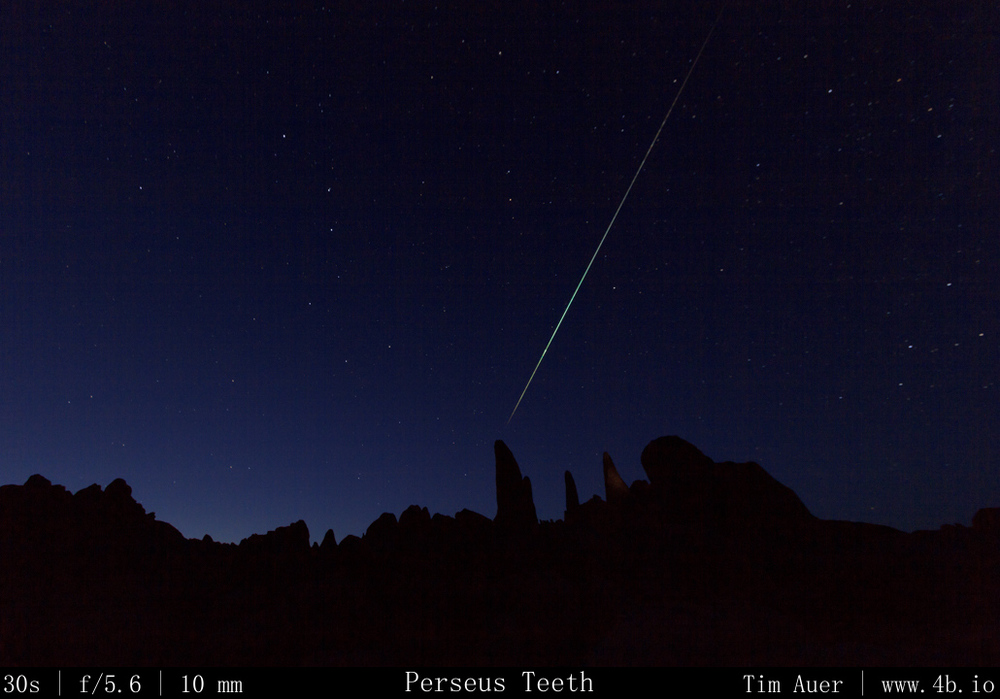
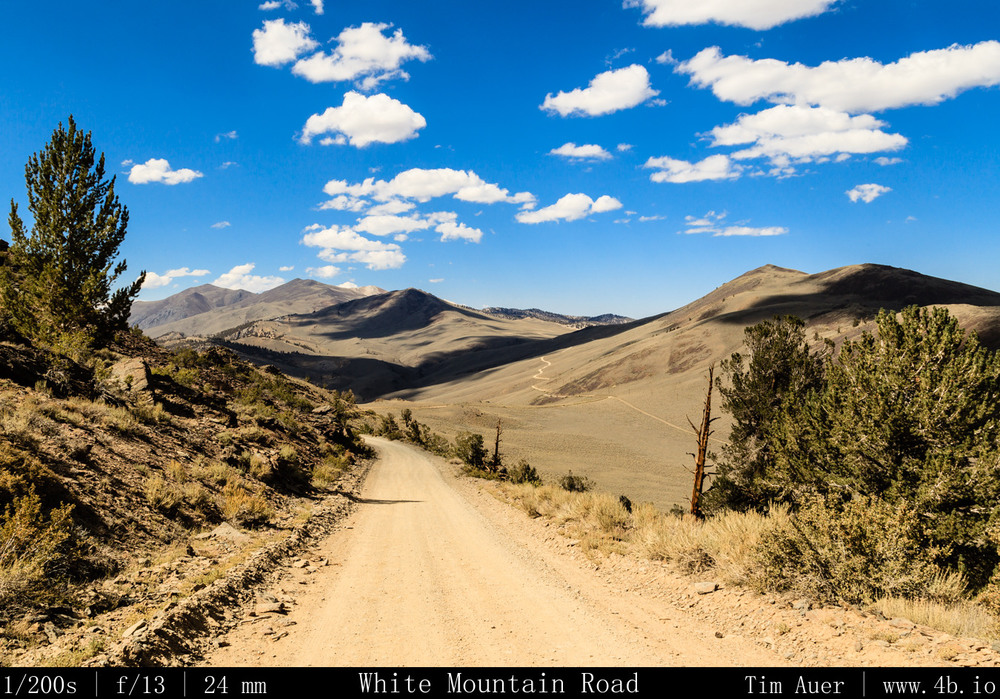 The long and winding road..
The long and winding road..
After breaking camp, I drove back to Lone Pine and had breakfast at the Alabama Hills Cafe. Moving at a relaxed pace this Sunday morning, I stalled in the cafe to recharge my batteries for as long as I could. After spending some more time exploring Lone Pine and its surroundings, I gradually began to make my way up 395 to Big Pine, California (elevation 3,900 ft). I topped off my gas tank, turned right at the edge of town on to California Rt.168 (10 miles), then a left onto the very steep White Mountain Road. After 13 miles of steady ascent, I was in the windswept lands of the ancient Bristlecone forests. To be exact, I was at the more accessible Schullman Grove (elevation 10,100 ft). This is where the paved road ended, and the halfway point to my destination. Ascending even higher for 12 additional miles on very rough dirt road (it took 90 minutes), I finally reach my destination: The Patriarch Grove. Nestled high in the White Mountains at an elevation well over 11,000 feet, the harsh landscape here looks more suited to be the moon than any place on green, hospitable earth. Yet, the dusty mountain sides are teeming with life, in the form of the magnificent Bristlecone pine. Gnarled, beaten down, and broken, these trees thrive here in these conditions. Some have held on to life for more than 4000 years. With so many unworldly features, this is the perfect place to connect the life on Earth to the rest of the nonliving universe. It was exhilarating to have the privilege to photograph the starlit heavens raining with meteors here.
 Bristlecones, with their bristles
Bristlecones, with their bristles
After parking, I took a short hike through the grove in the warm afternoon sun, scouting my nighttime locations. As I did so, a few people showed up and began to assemble telescopes and scout their positions. By sundown, the people in the grove filtered down to those of us staying through the night, about 5 or 6 people in total. After spending the last two nights completely alone and isolated, it was nice to be able to talk with some other people, and hear their experiences. Like the previous, this night was to be a 3-camera show too. I decided to take a slightly different approach this evening. The two ultra wide set-ups would sit stationary for hours, while the other camera would be my “roamer”.
I positioned the 6D+14mm in a northeasterly direction and the 60D+10mm in a westerly direction. The 60D was positioned west because I particularly liked the composition, and no other reason. Besides, I felt like on the previous night there more hot fireballs in that piece of sky. So I knew the Perseids would be everywhere. The 1D+17mm was my roaming unit. I would find a position for this camera, compose the shot, and let it sit for 15-90 minutes, depending on the conditions. At one point, this camera was on top of a peak over a half mile away from my two other cameras, which were in the same general area and only 200m apart. For this night, I decided to use slightly shorter shutter speeds, while pushing the ISO with the goal of capturing even the most faint meteoric activity. There was no time to rest for the next 7 or 8 hours, and when I did take a break to watch the sky, I realized the temperature had dropped well below freezing. My Nalgene had even begun to freeze! By 04:30, I was getting quite chilled, I decided to warm up in my car and to take a brief nap, knowing that I would need to wake by 05:30 to reconfigure my cameras and avoid overexposing the frames in the morning twilight.
Despite having a 30 degree bag, being fully dressed, and inside my car, I never was exactly comfortably warm. It must have been colder than I realized, but I shouldn’t be surprised of this considering I was at elevation over 11,000 feet. Bleary eyed and mouth parched, I roused myself at 05:30. It was still quite cold and dark and conditions like that always demand some additional effort to overcome, but I can proudly say I was up and out in less than a minute! I even have to photographs to prove it. One of my cameras looked the direction of the car. To the naked eye, it was still very much dark out, but to a camera’s ISO 6400 sensor, it was rapidly beginning to overexpose. As the sun approached the horizon, I needed to adjust each camera 4 additional times to accommodate the varying conditions.
 Self “portrait”, morning light
Self “portrait”, morning light
The quality of light at sunrise here in the White Mountains was superior. It was a rich, golden red light that rapidly raced along the mountain side, reflecting off the white dolomite, but it didn’t last long. As the sun crept higher above the horizon, this golden red light became orange, then yellow, and then a flat white…
Thus signalling the end of my Perseid weekend…and the start of my 8 hour drive back to Silicon Valley for work.
New gear utilized:

